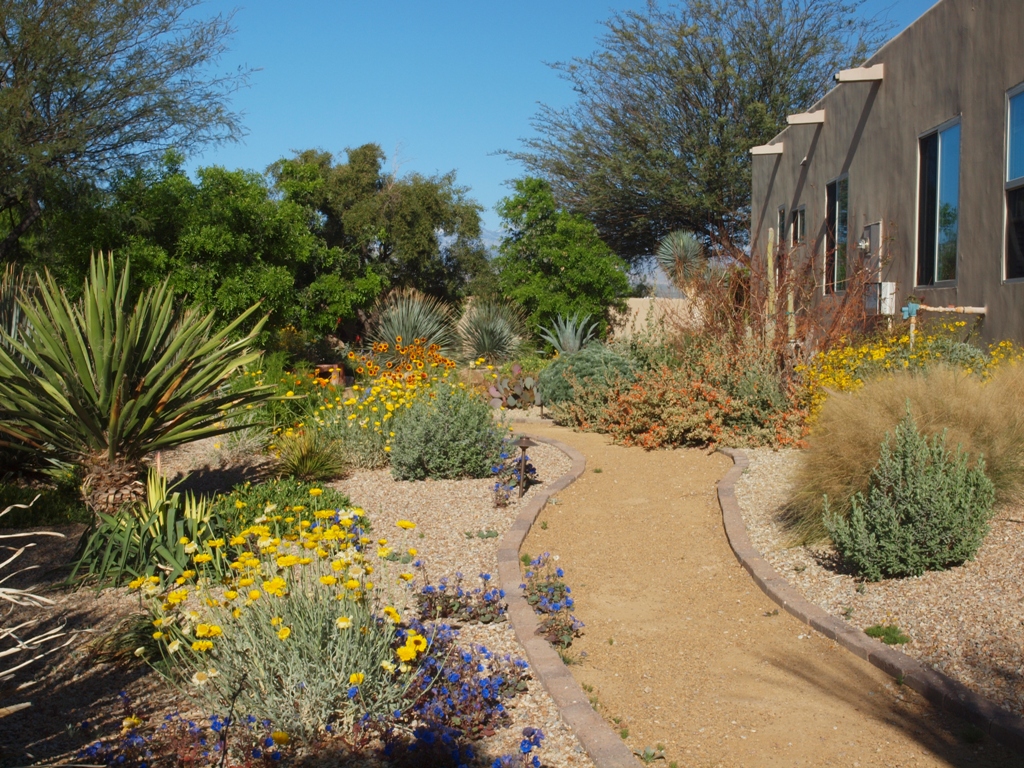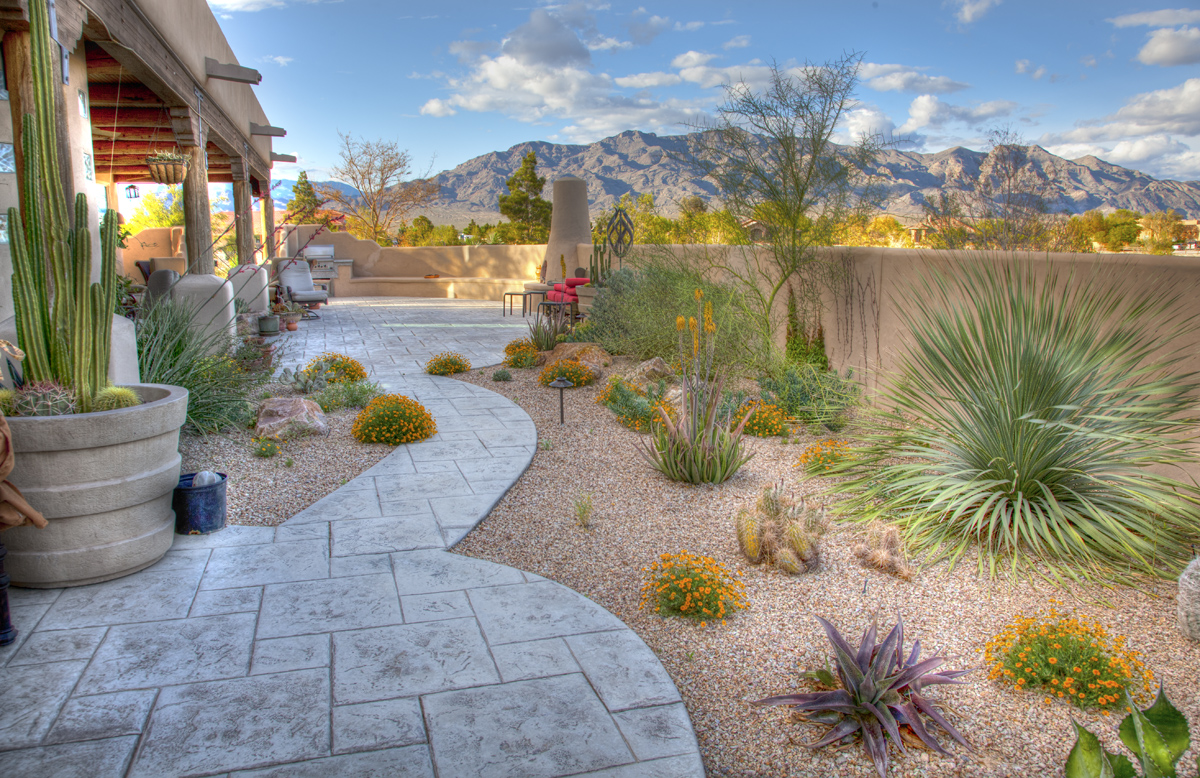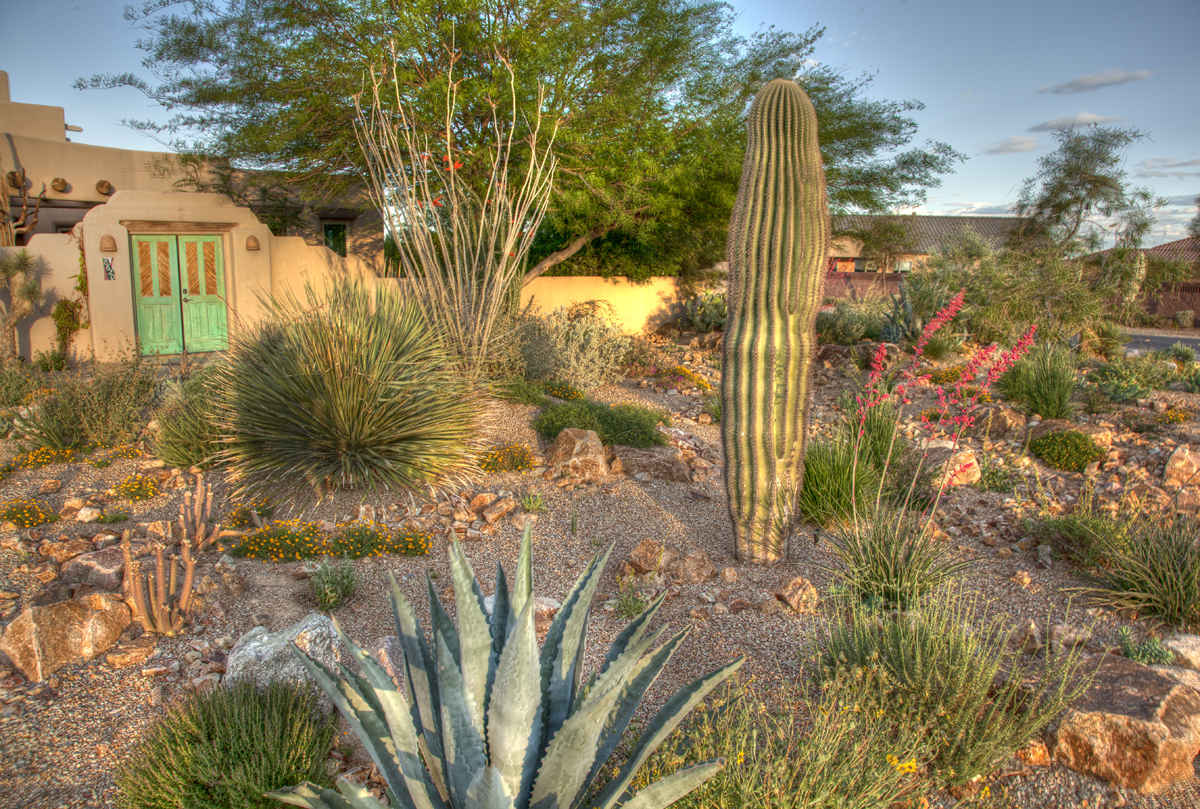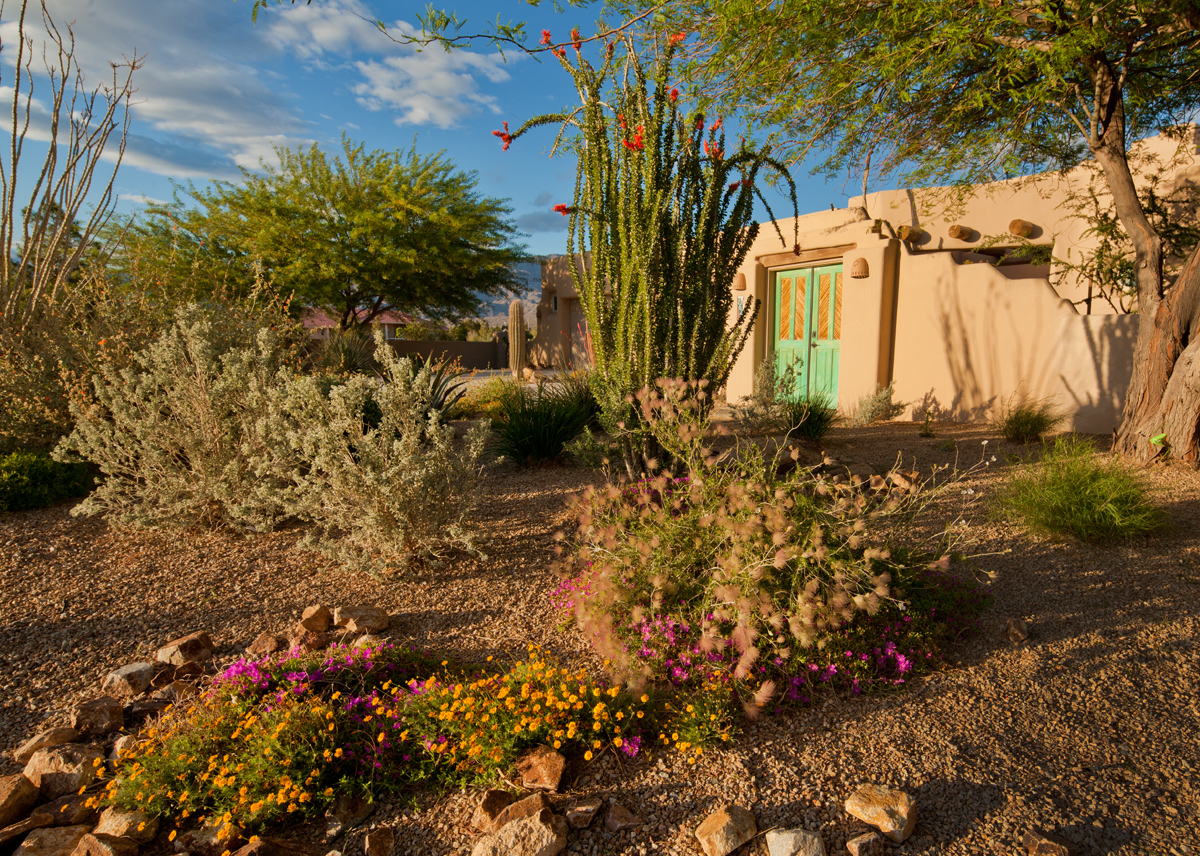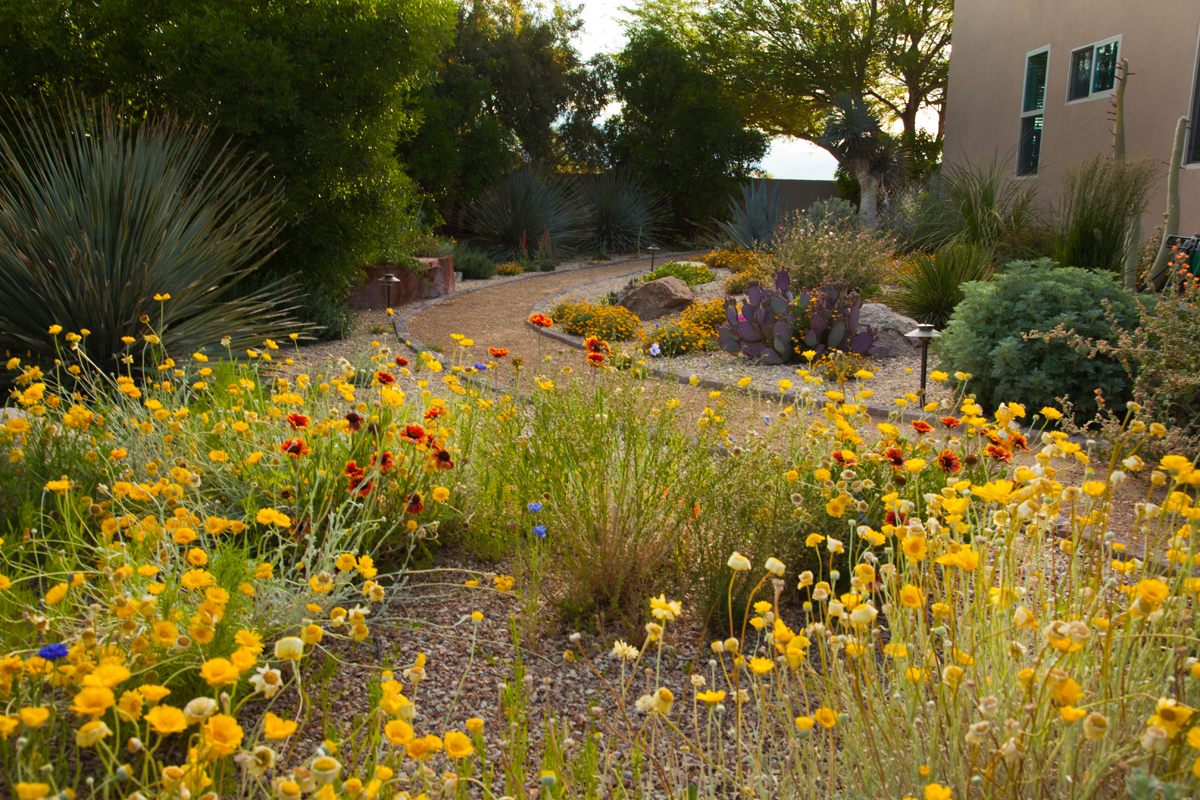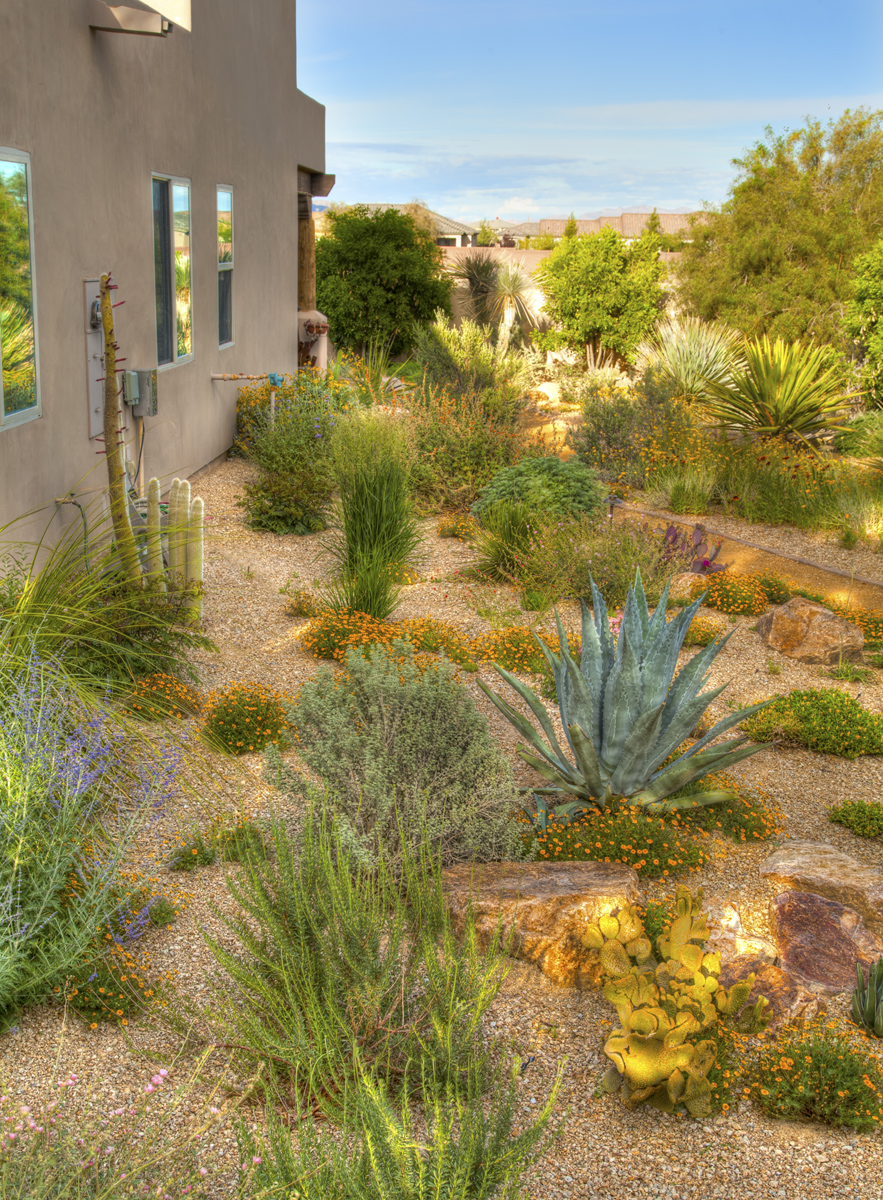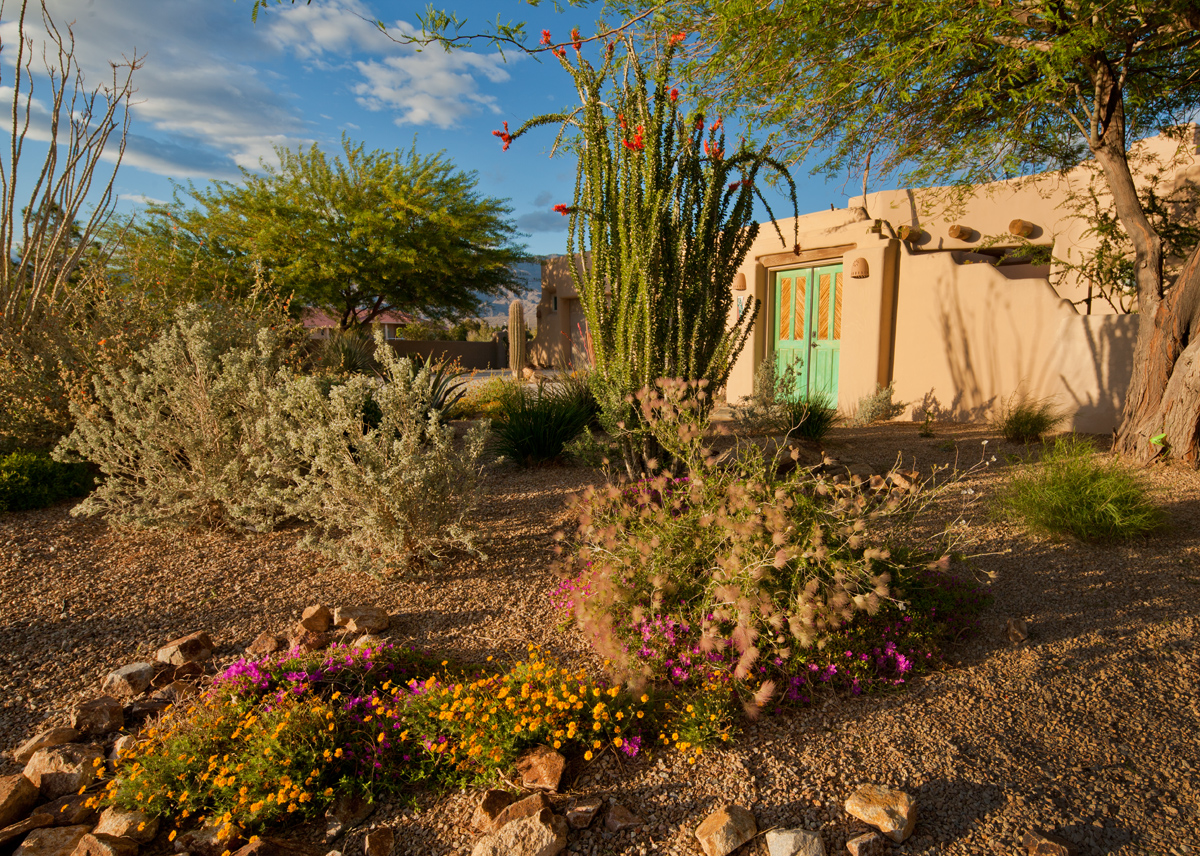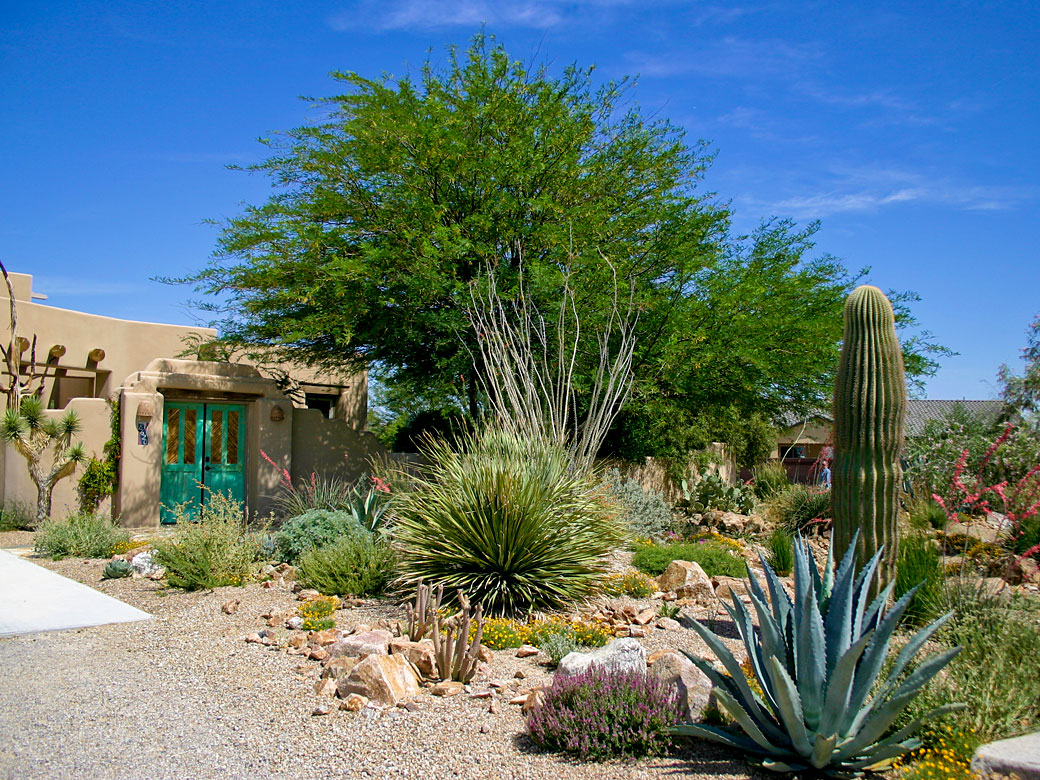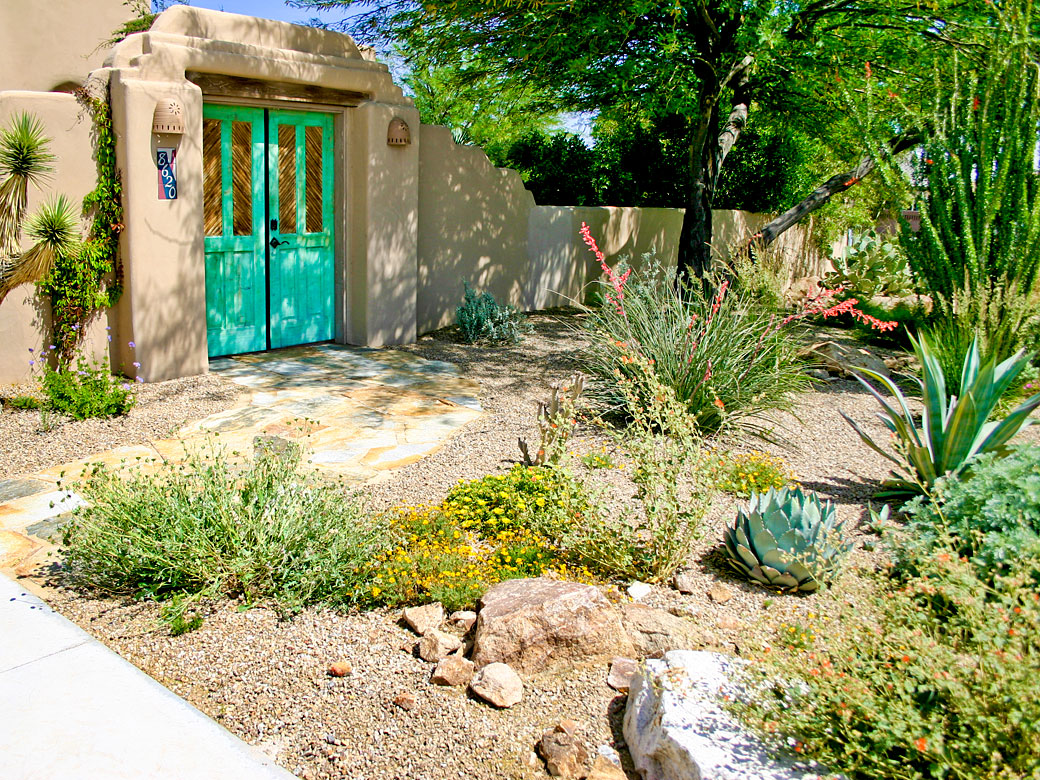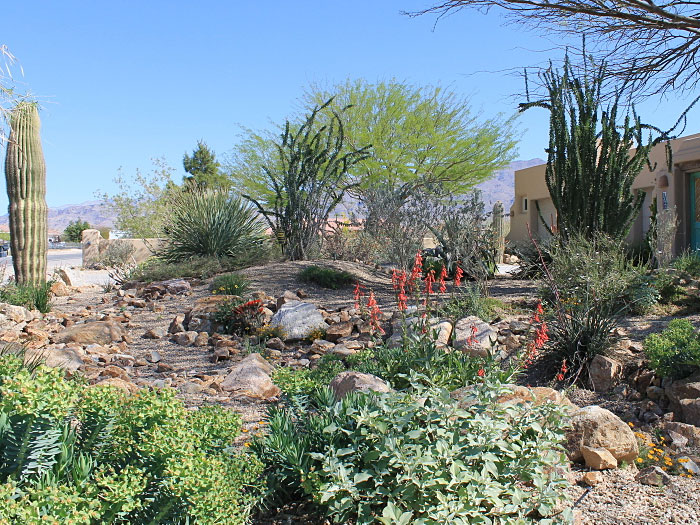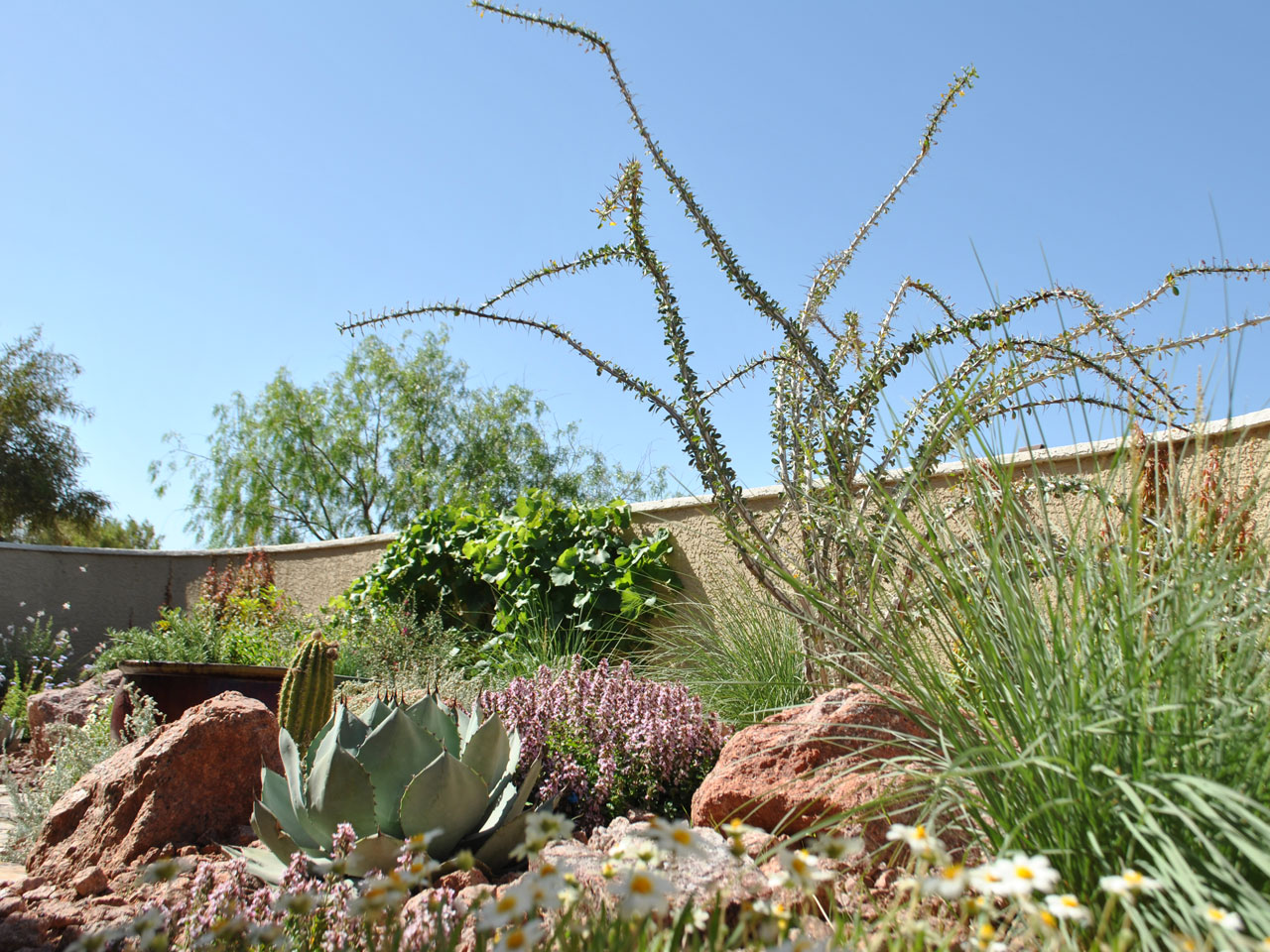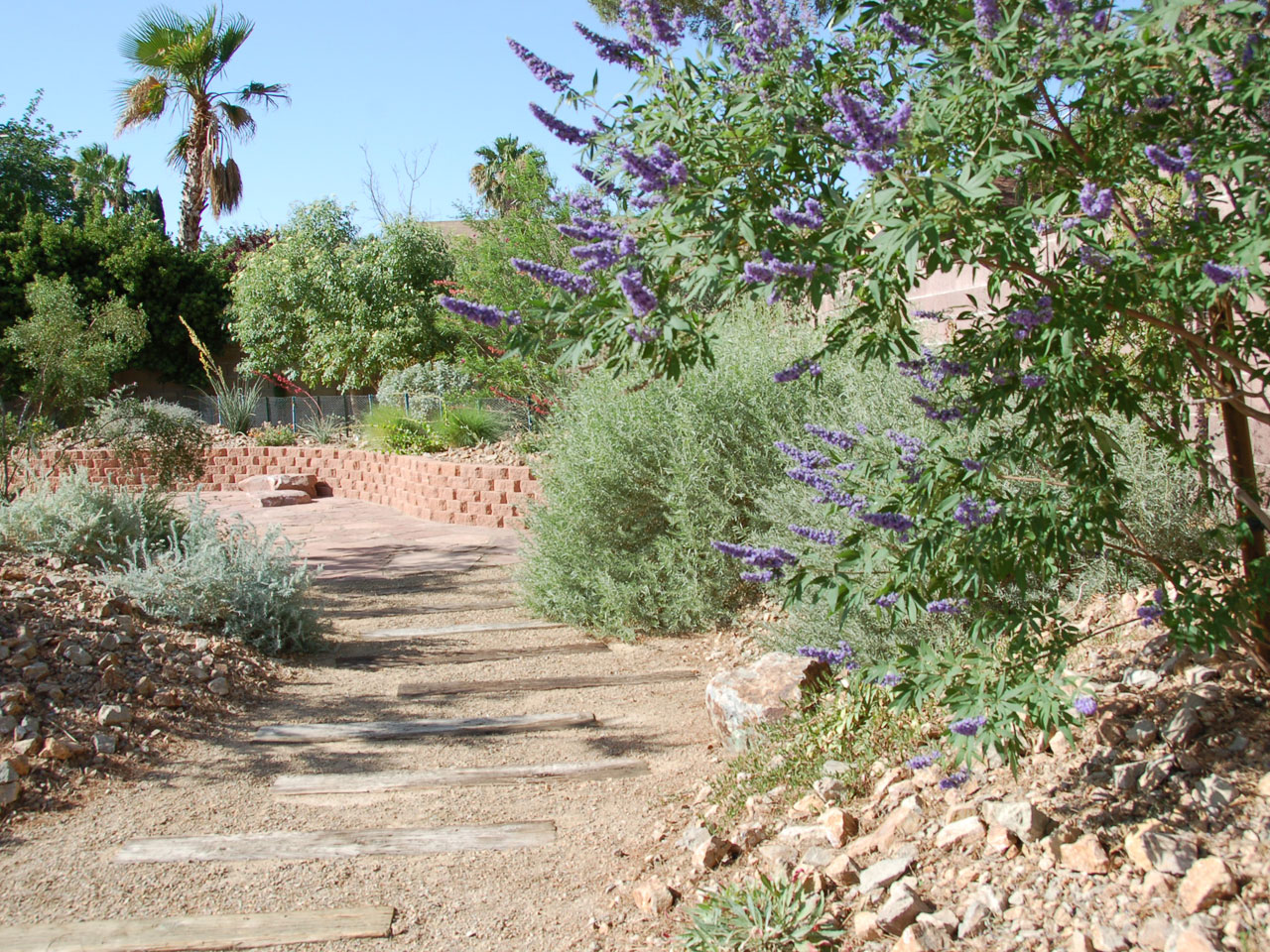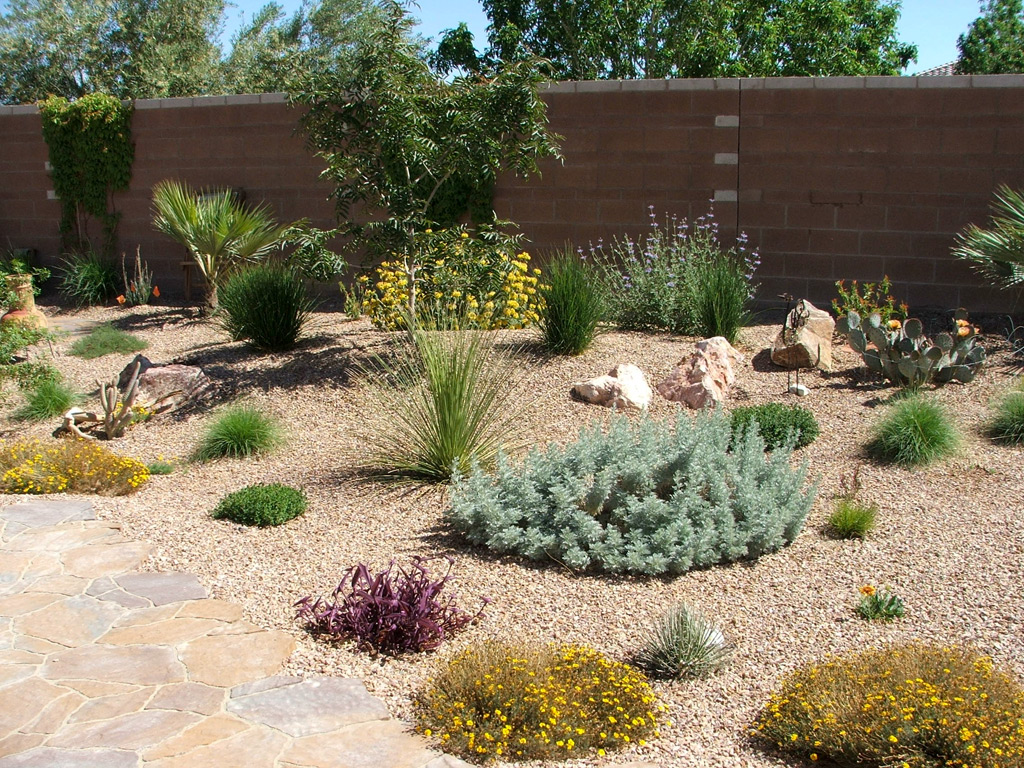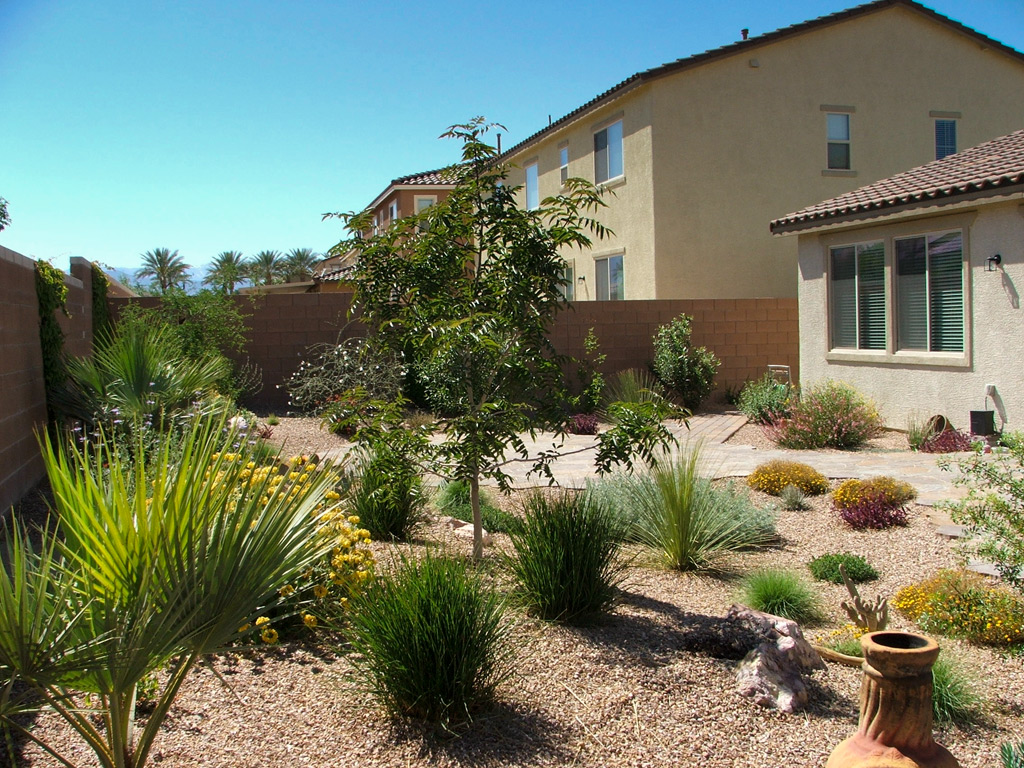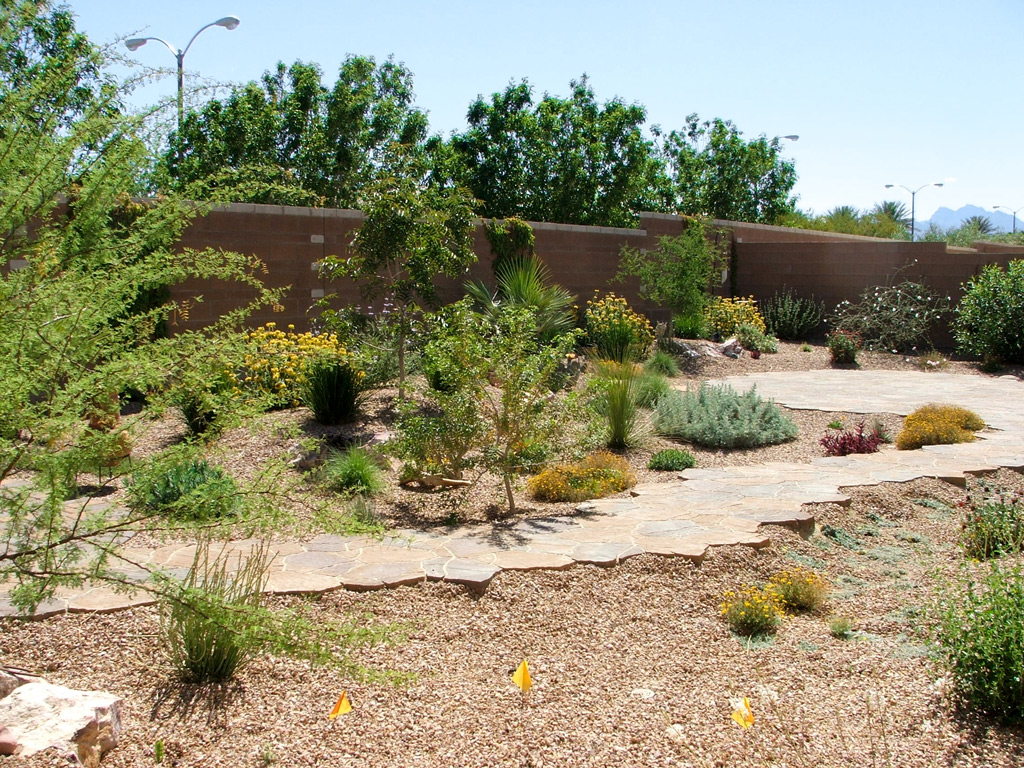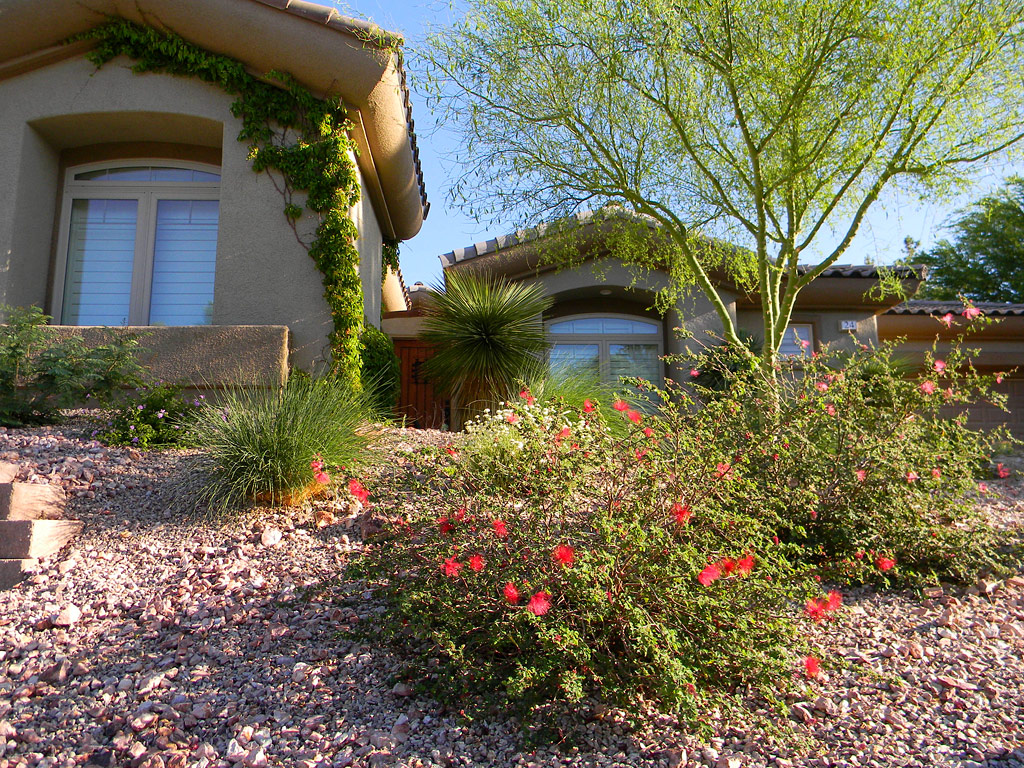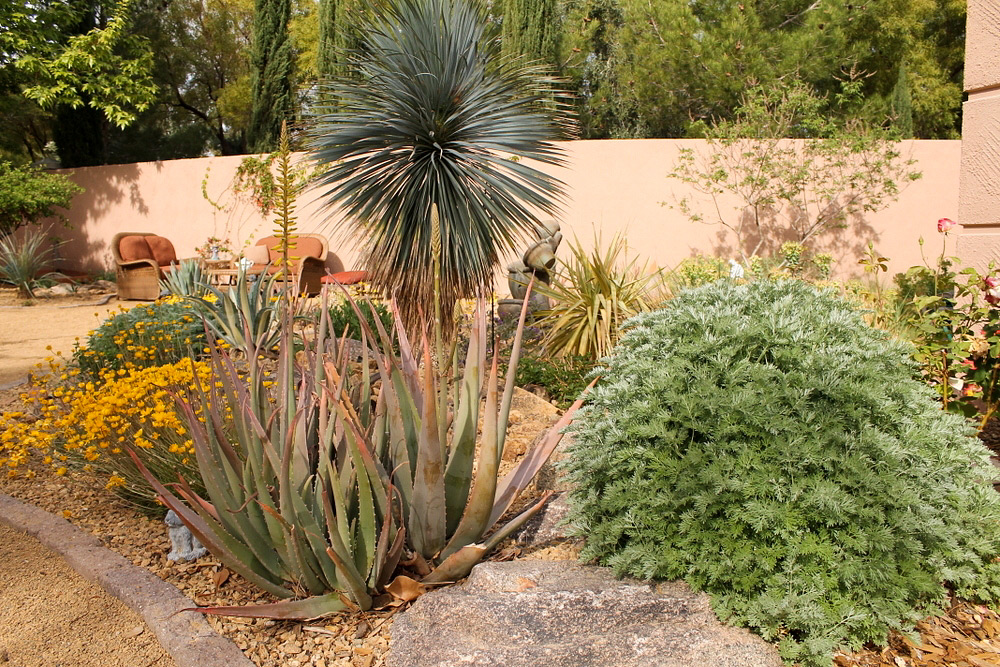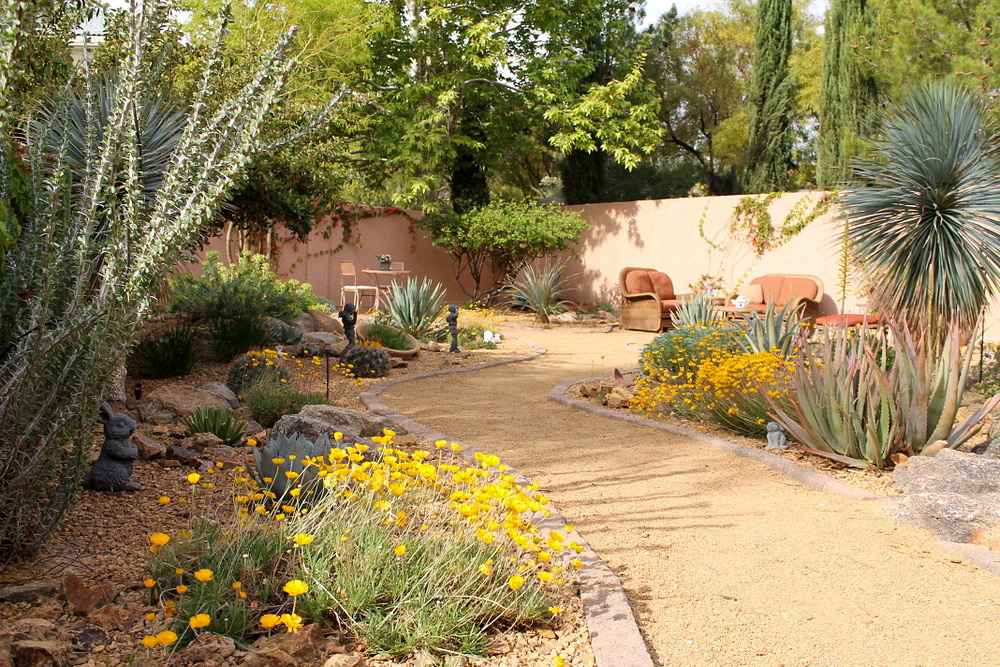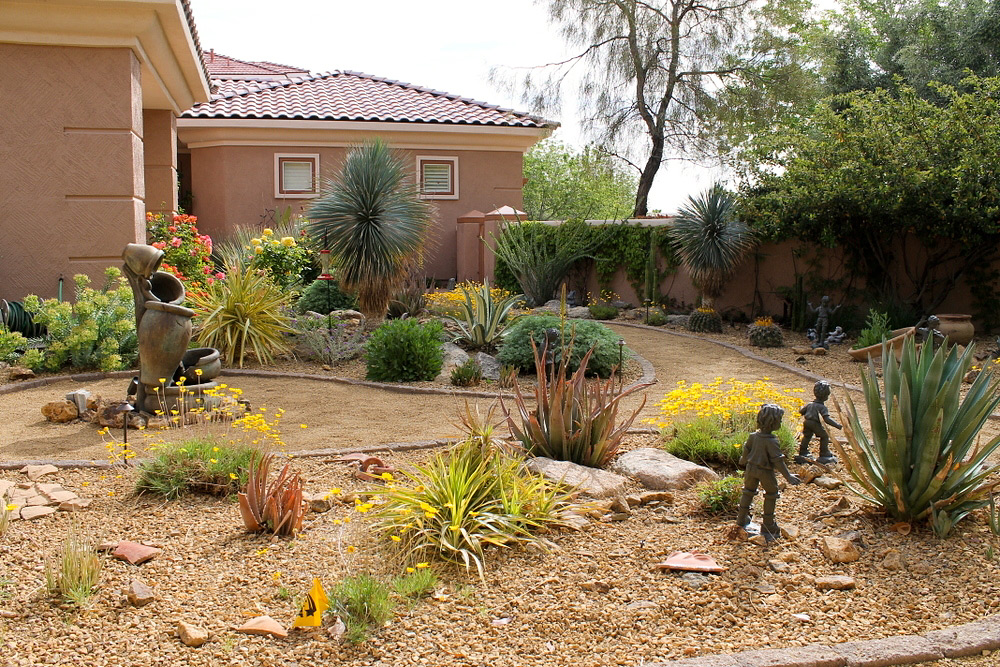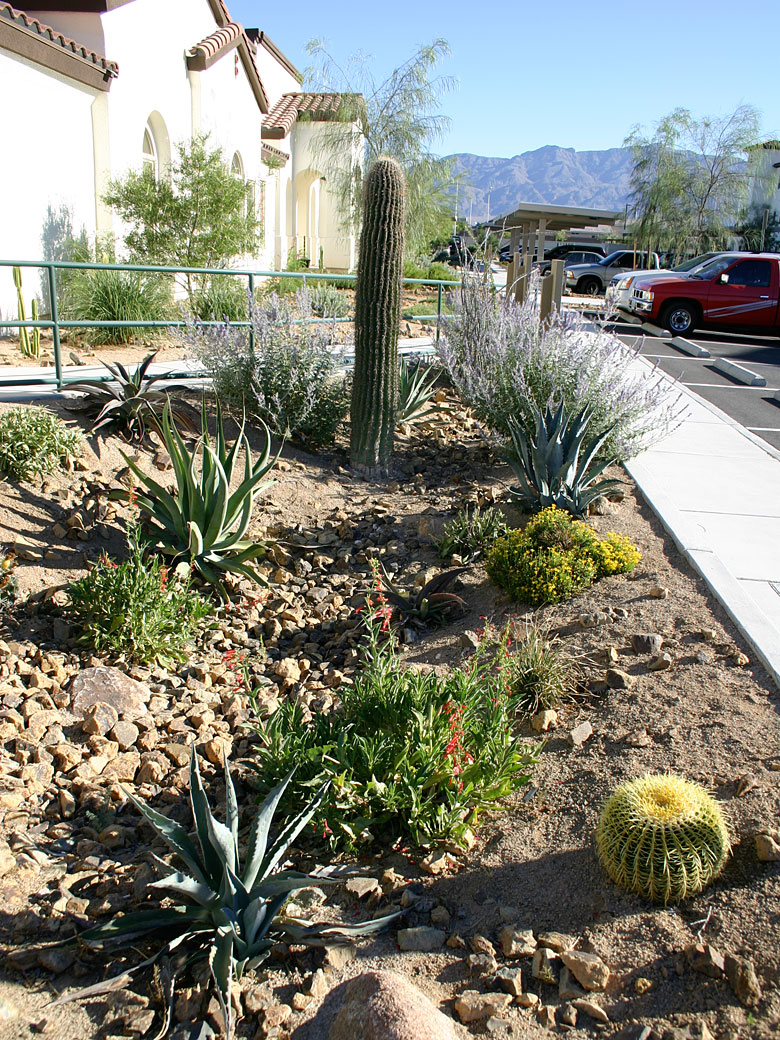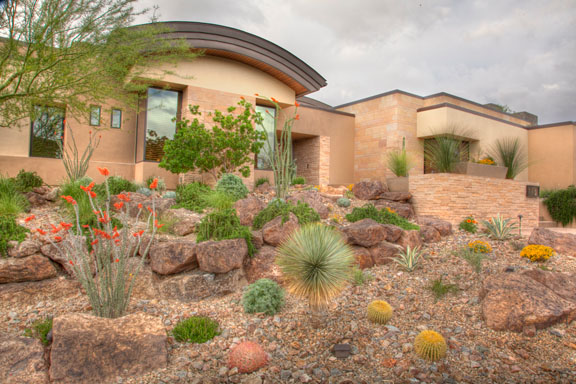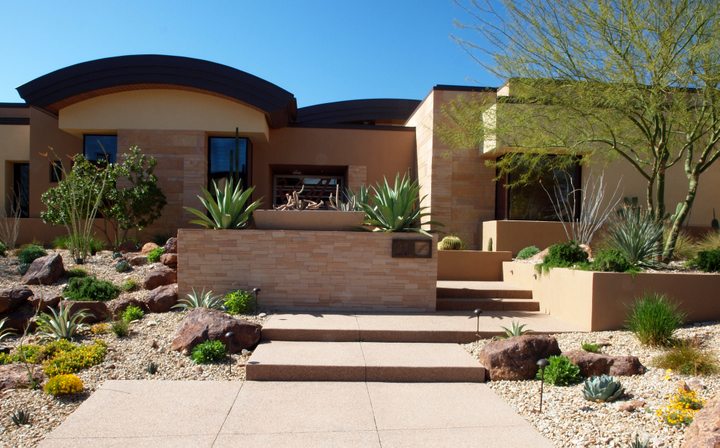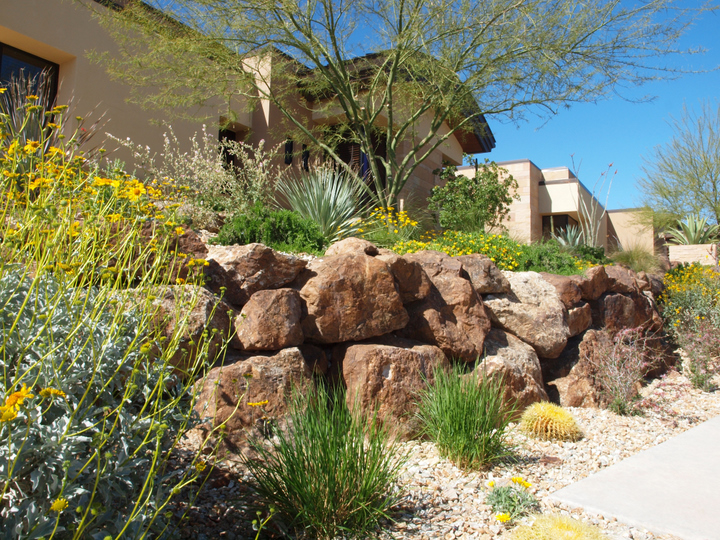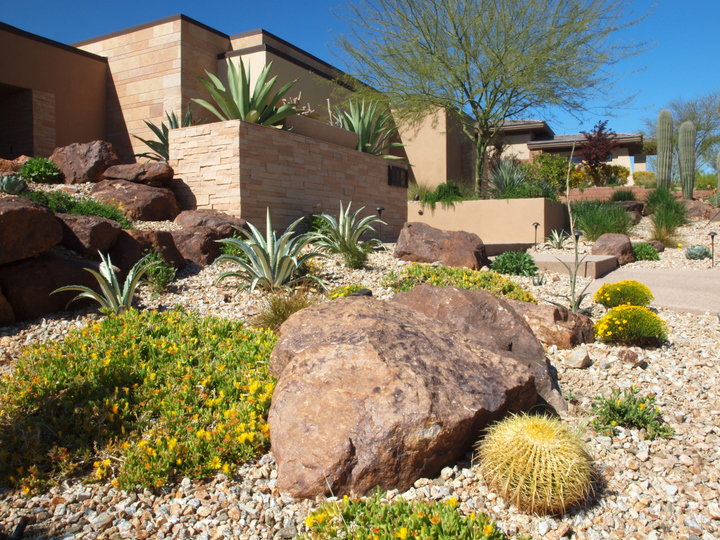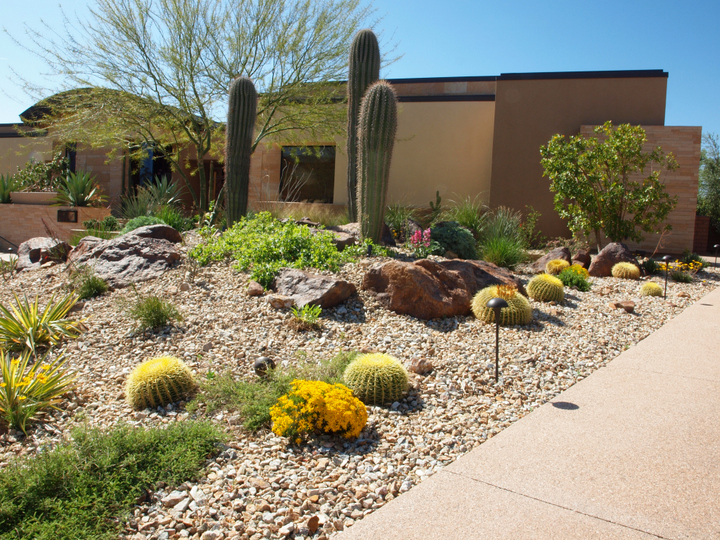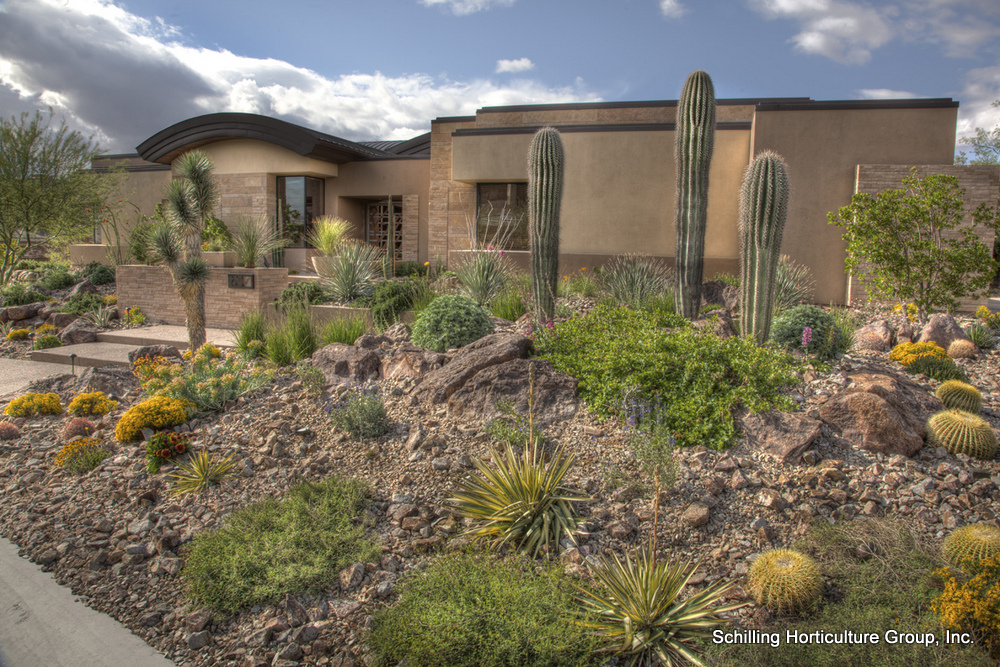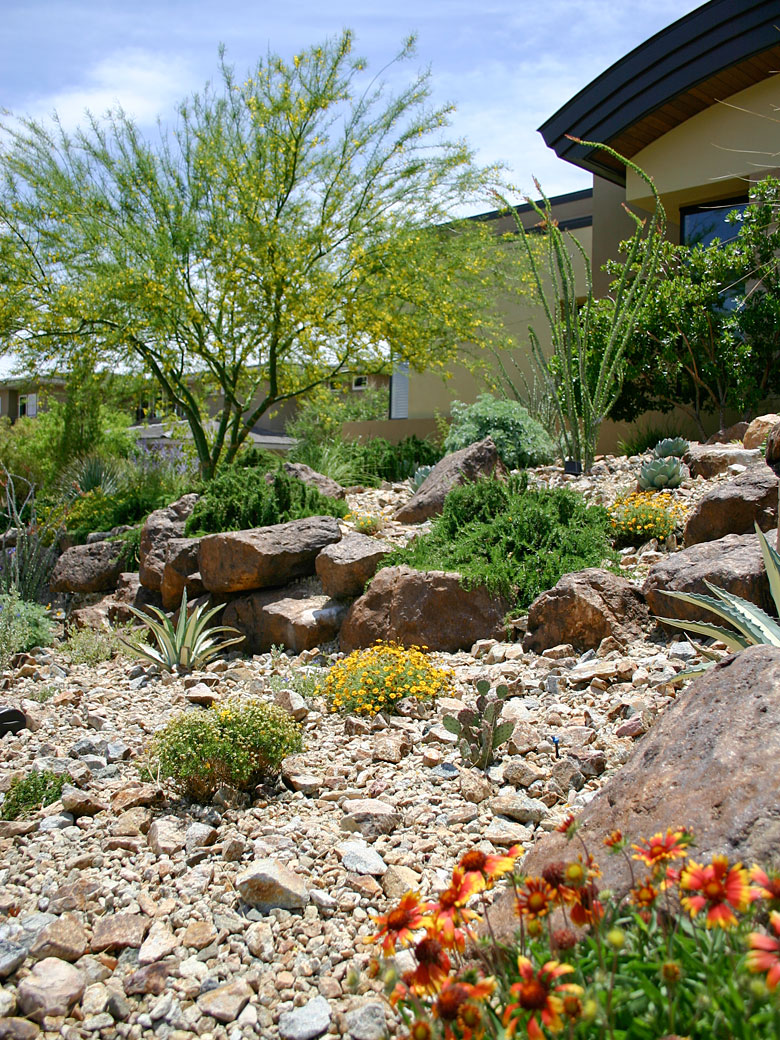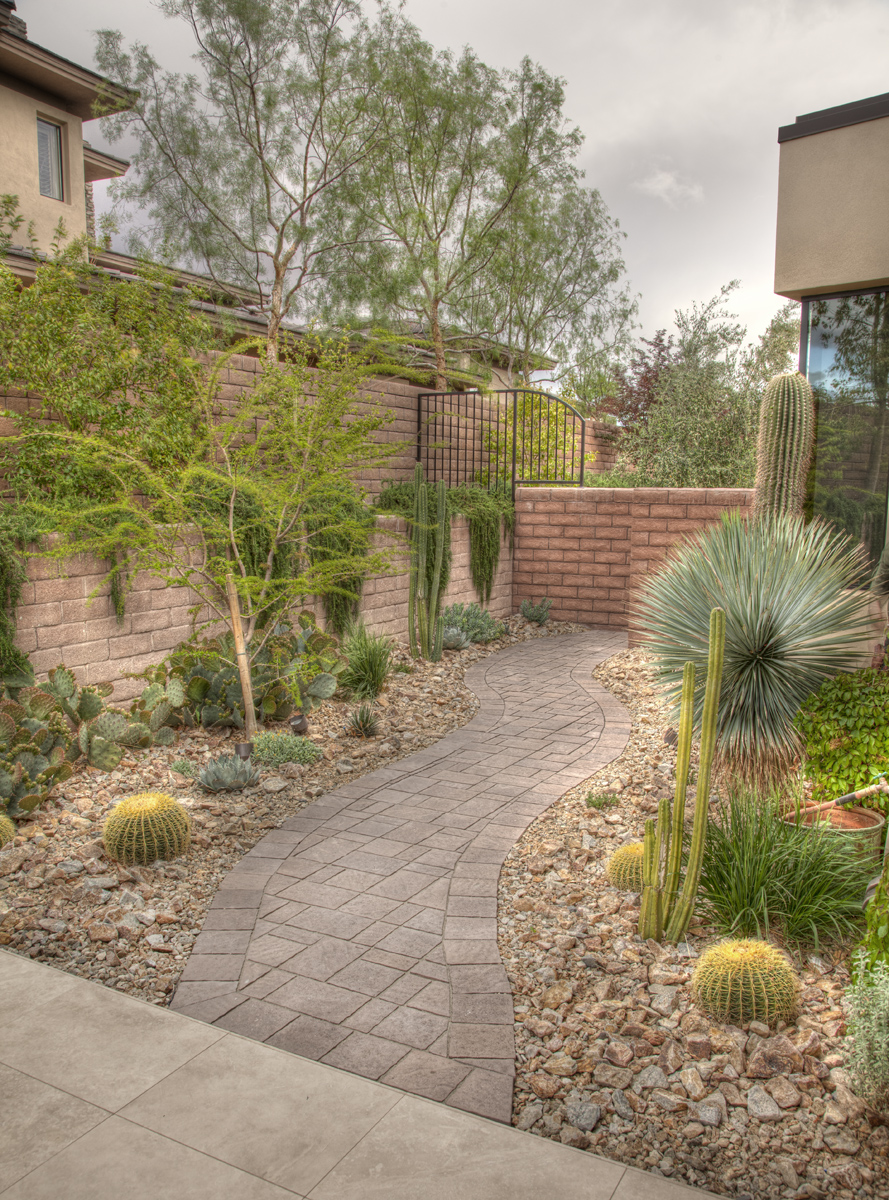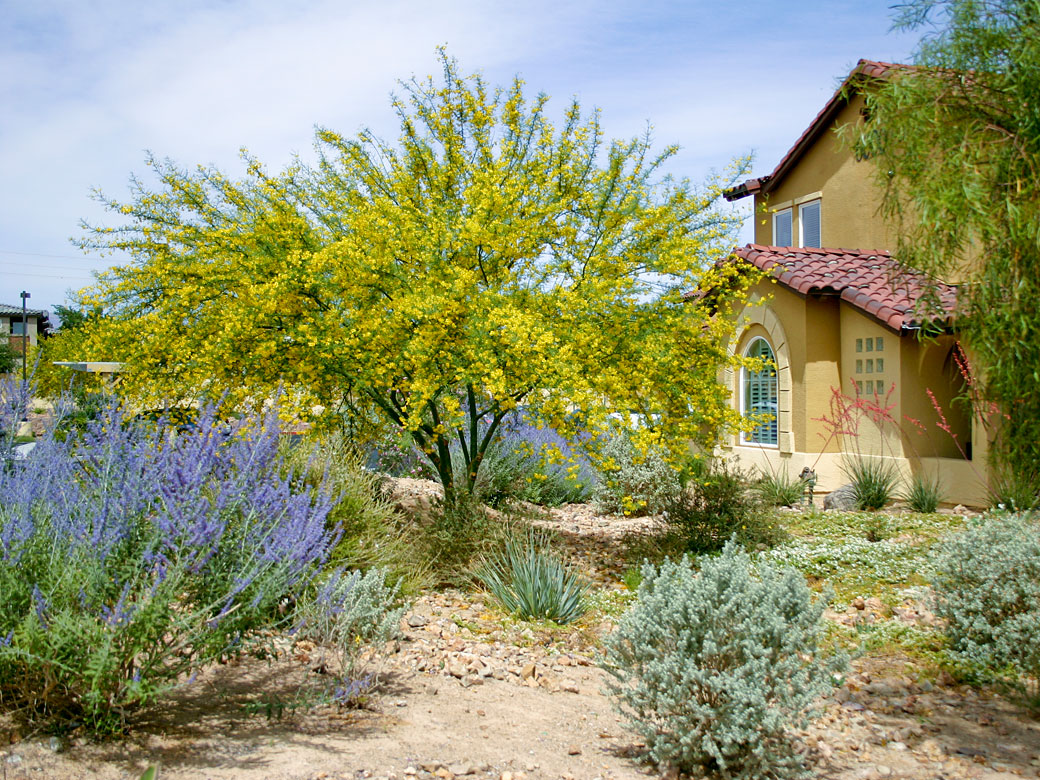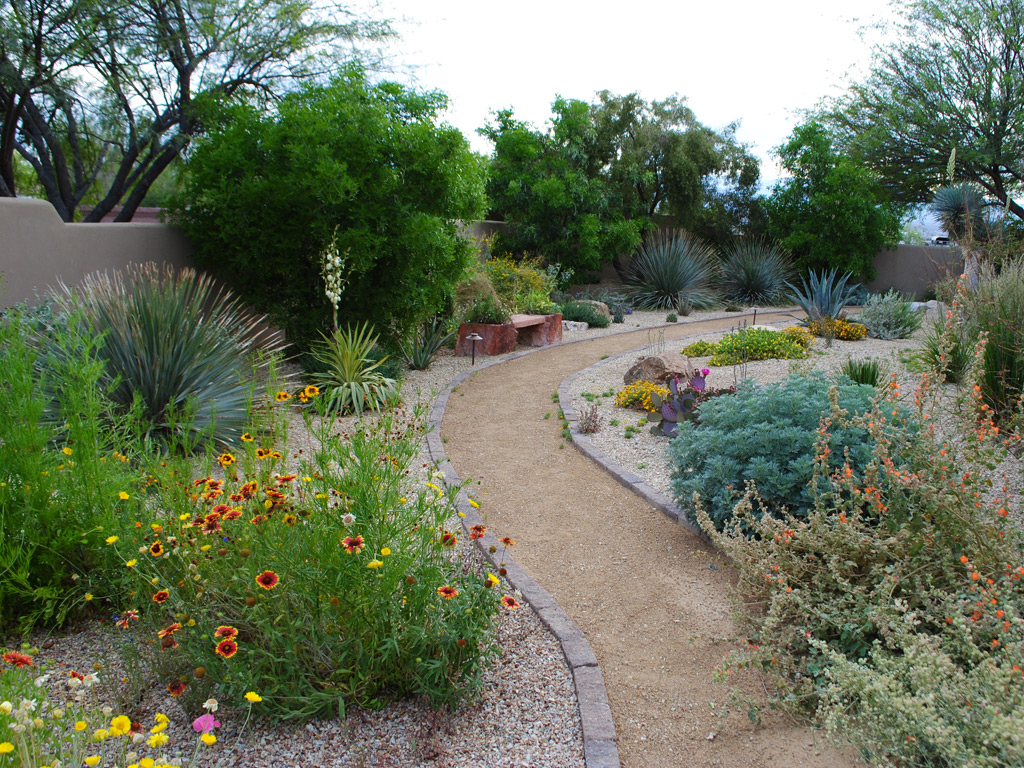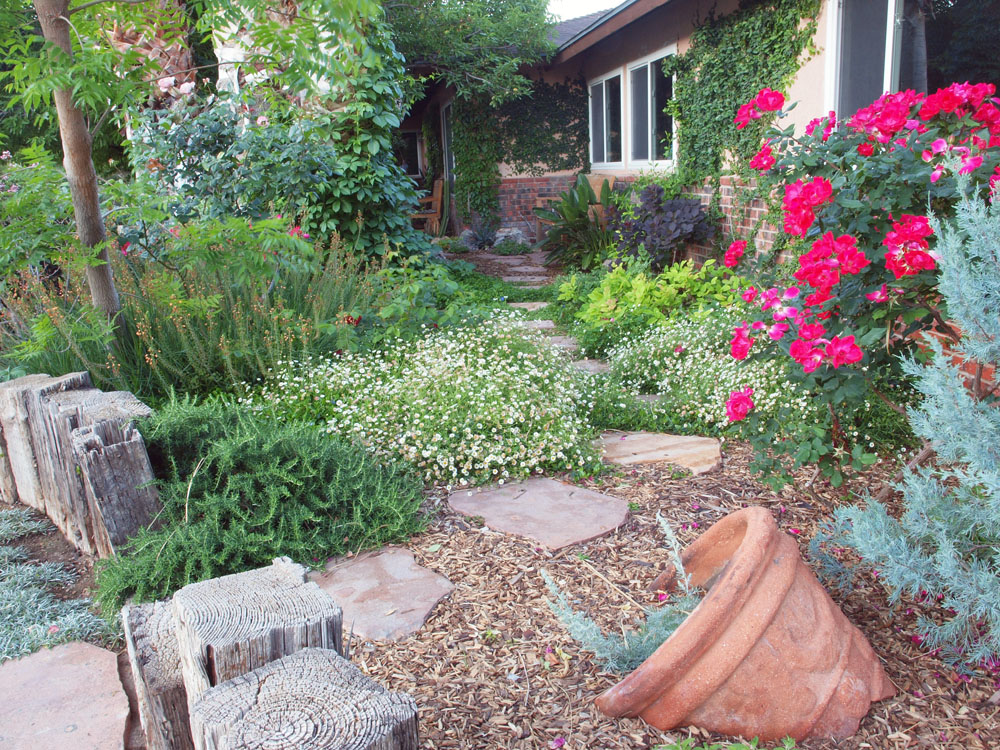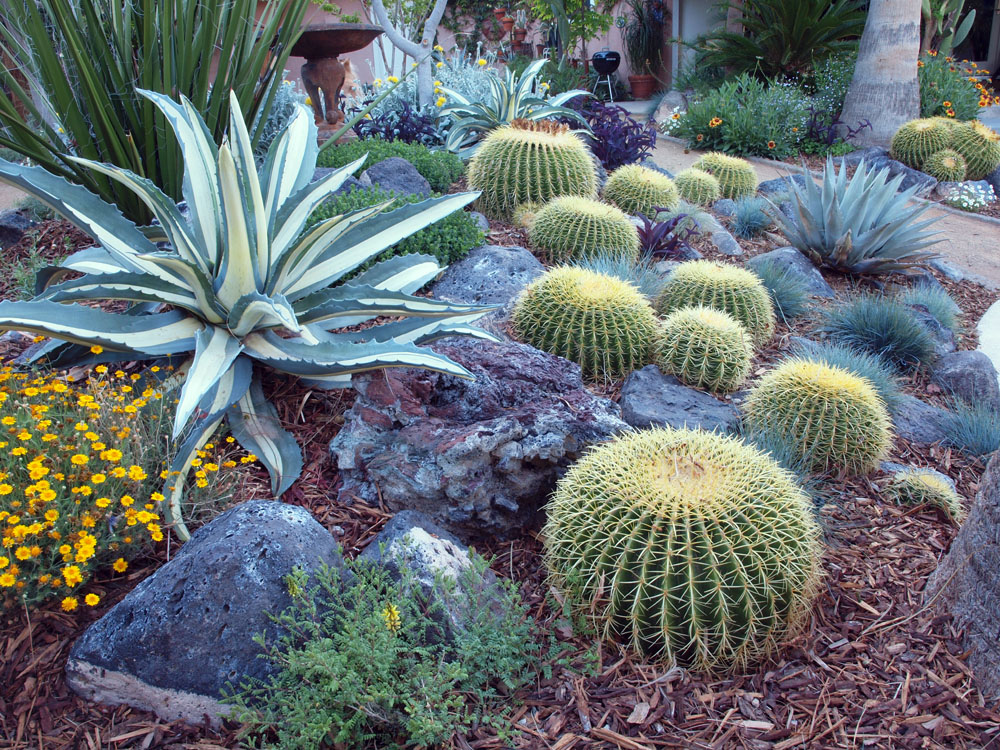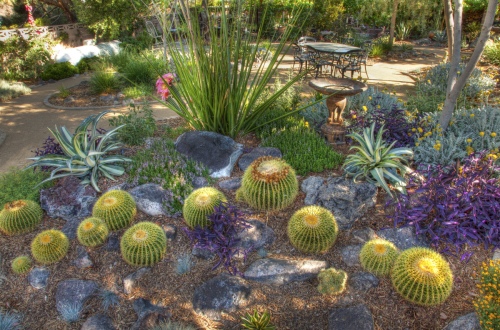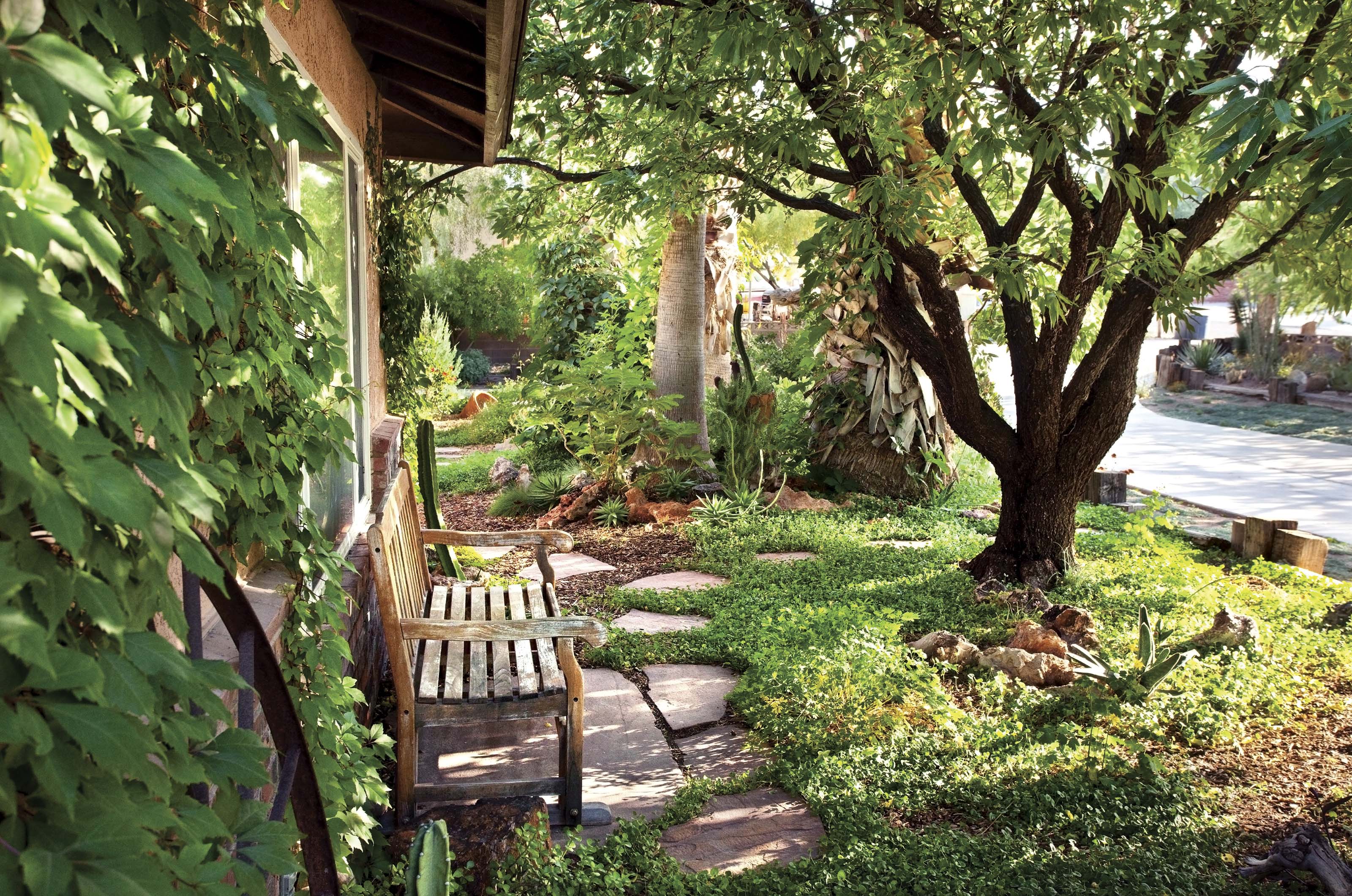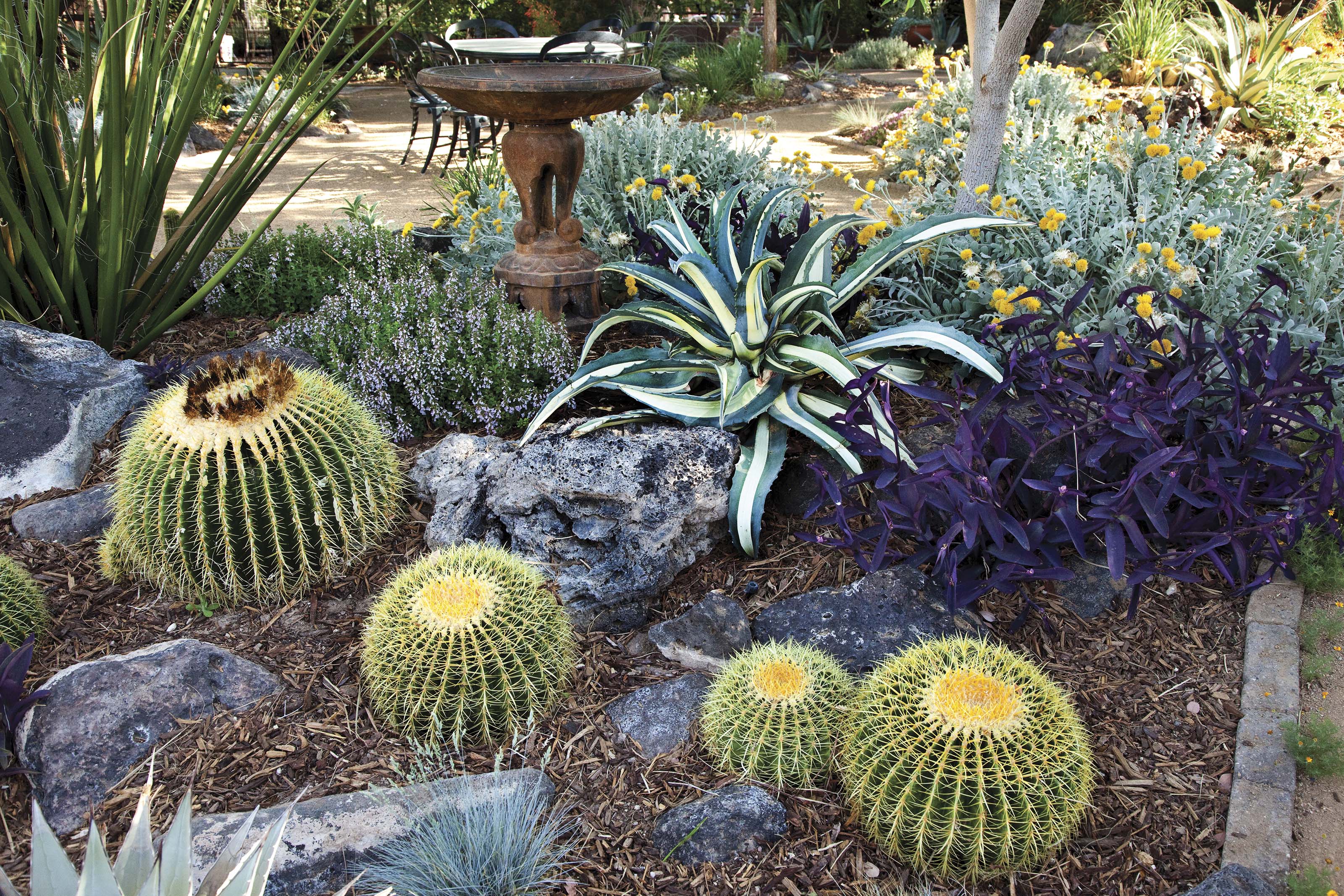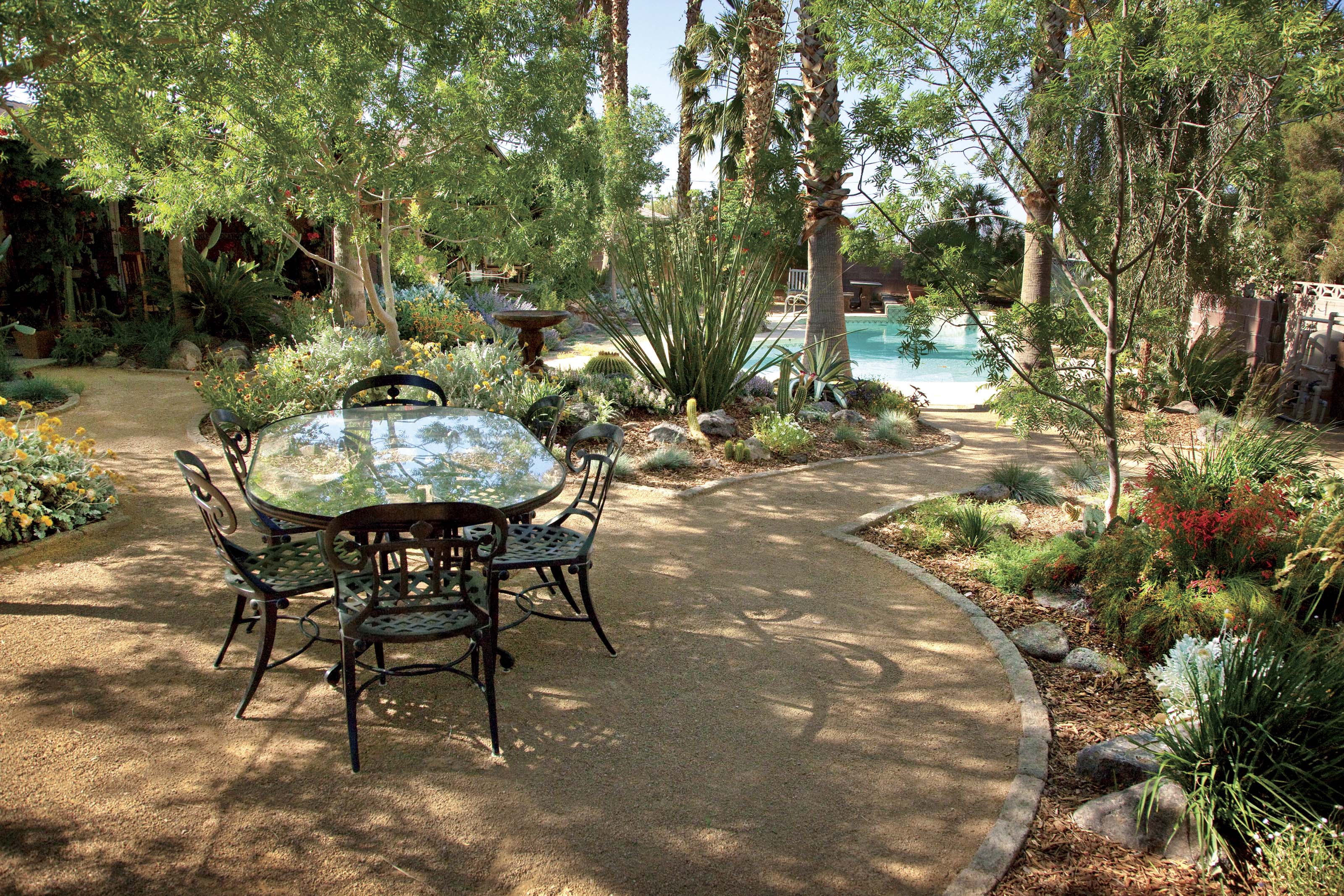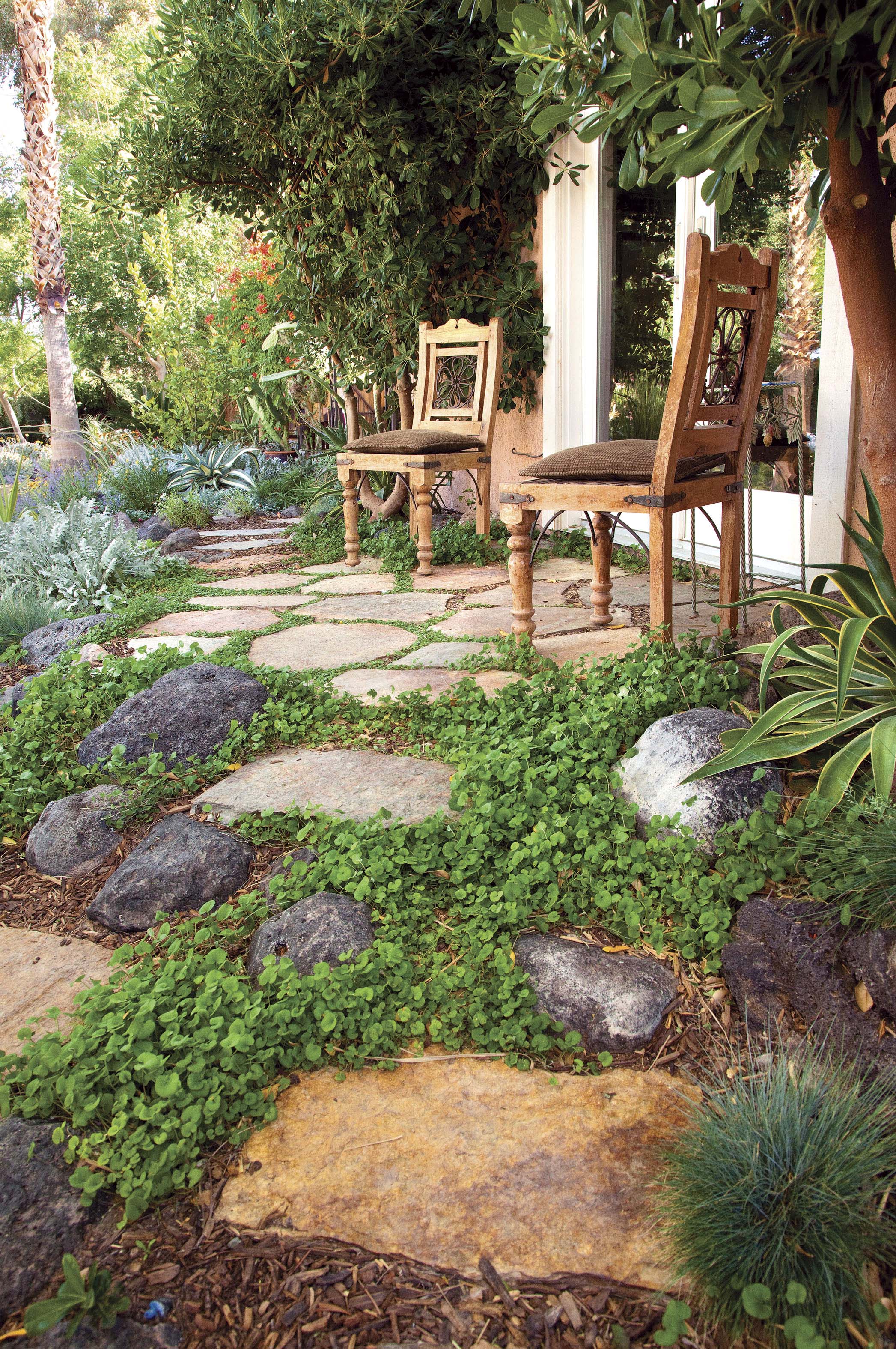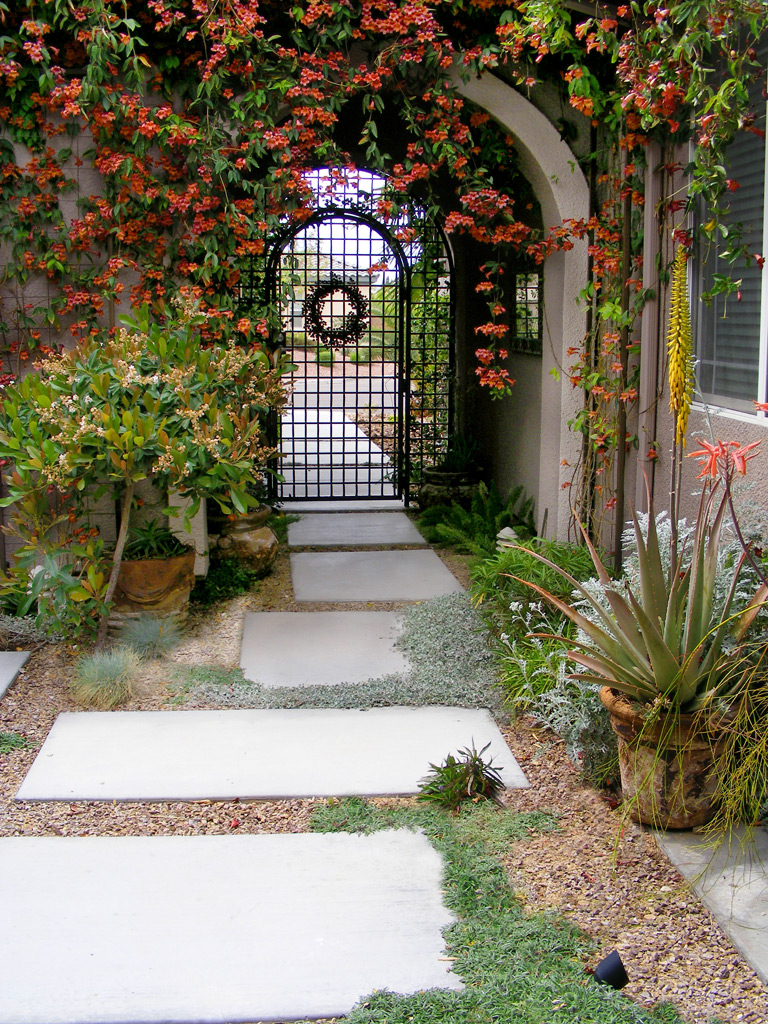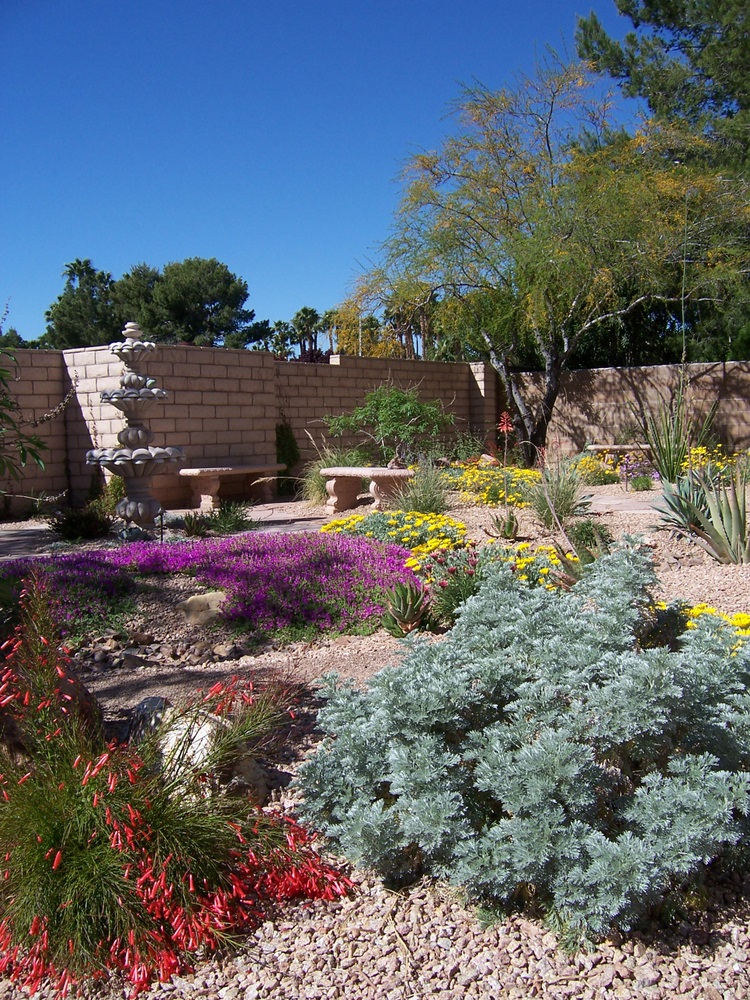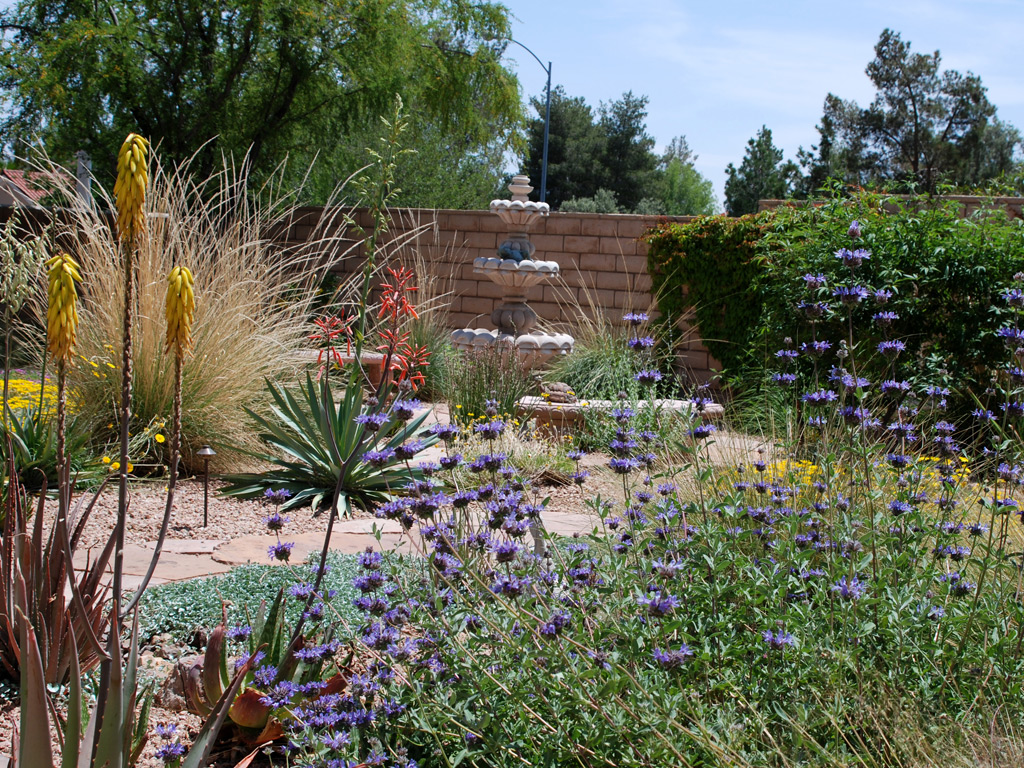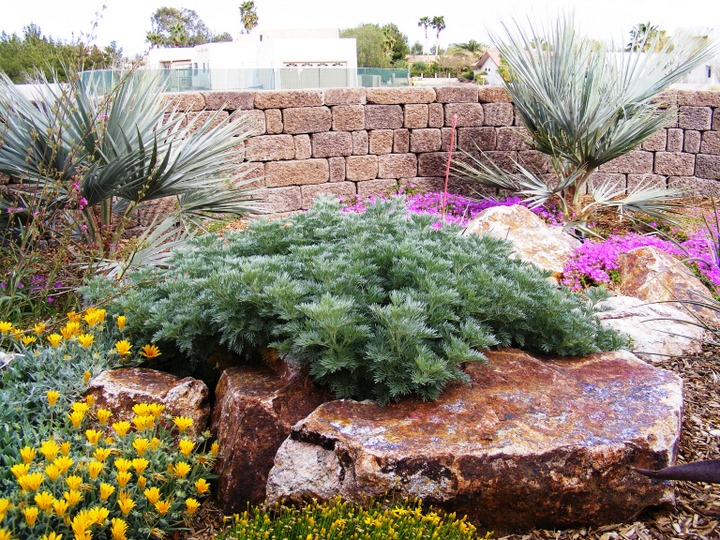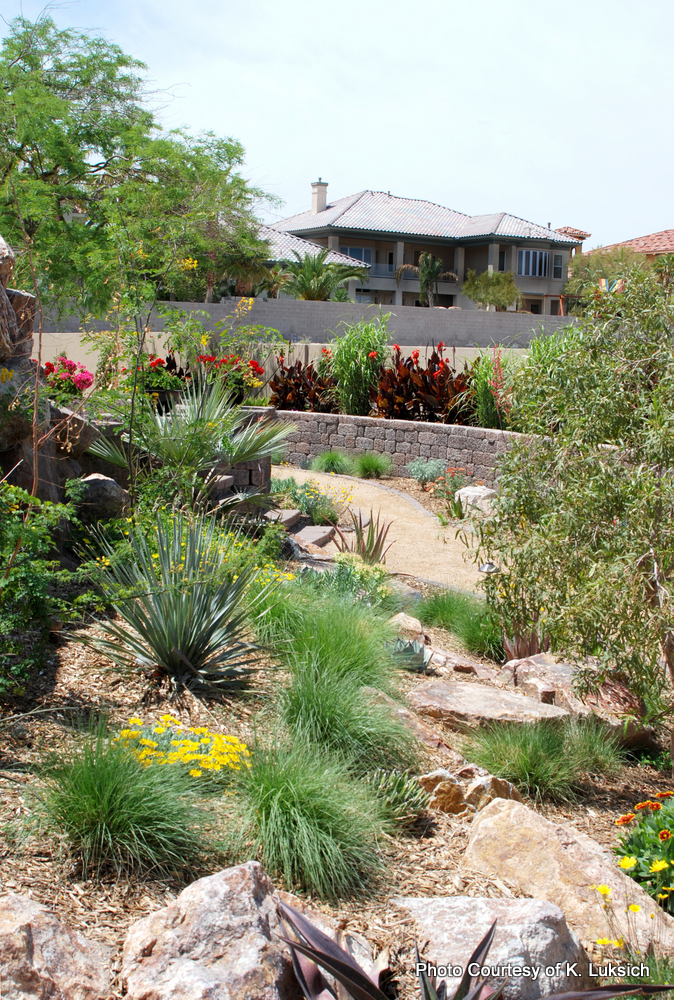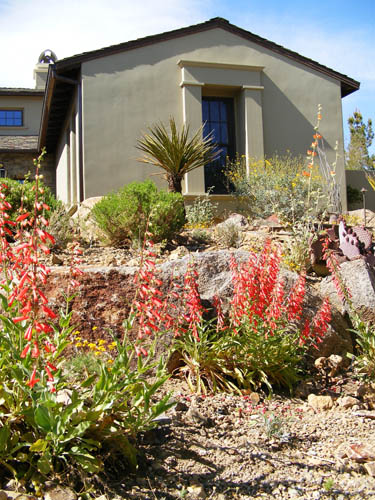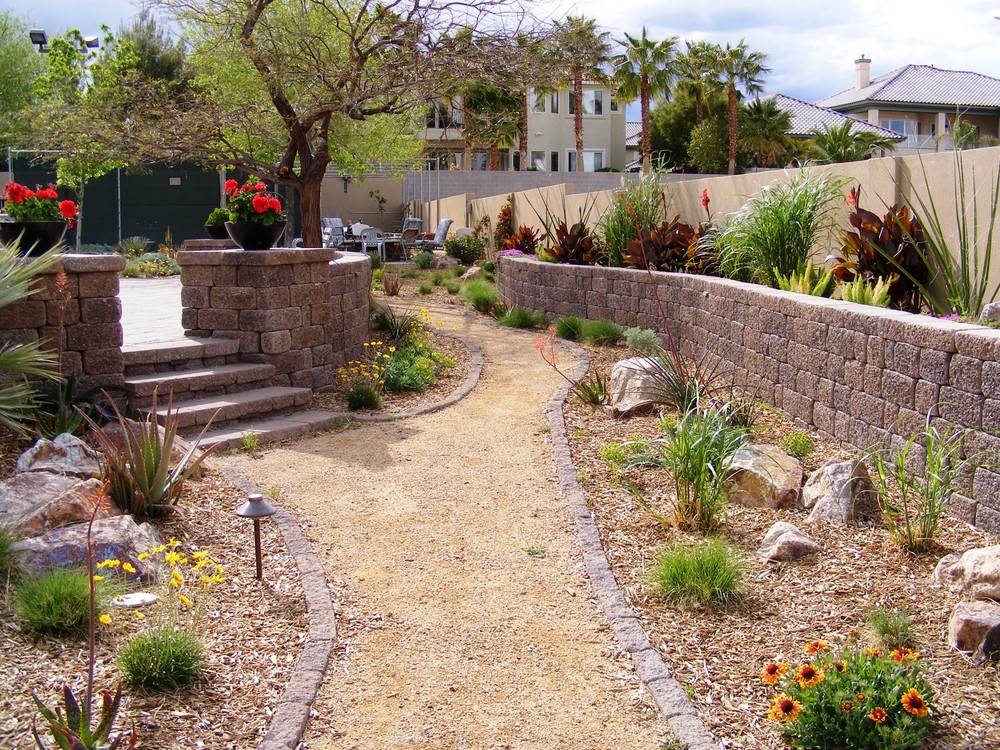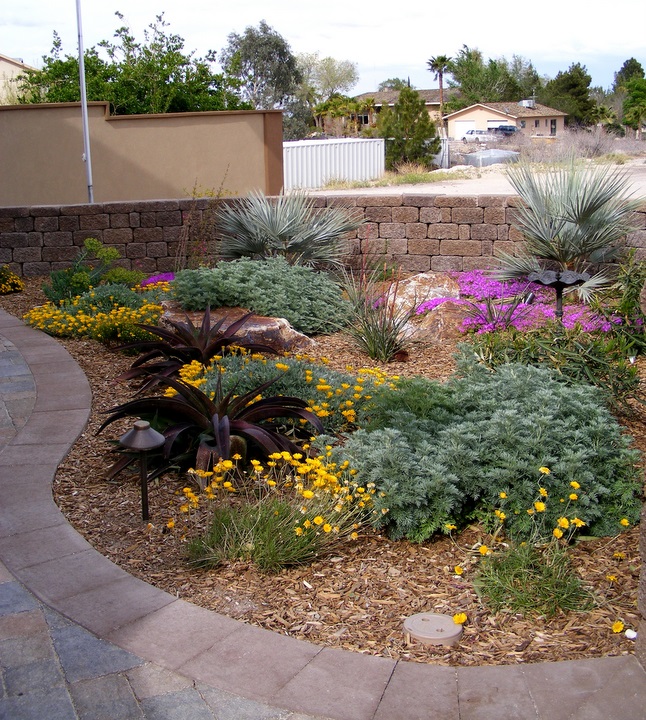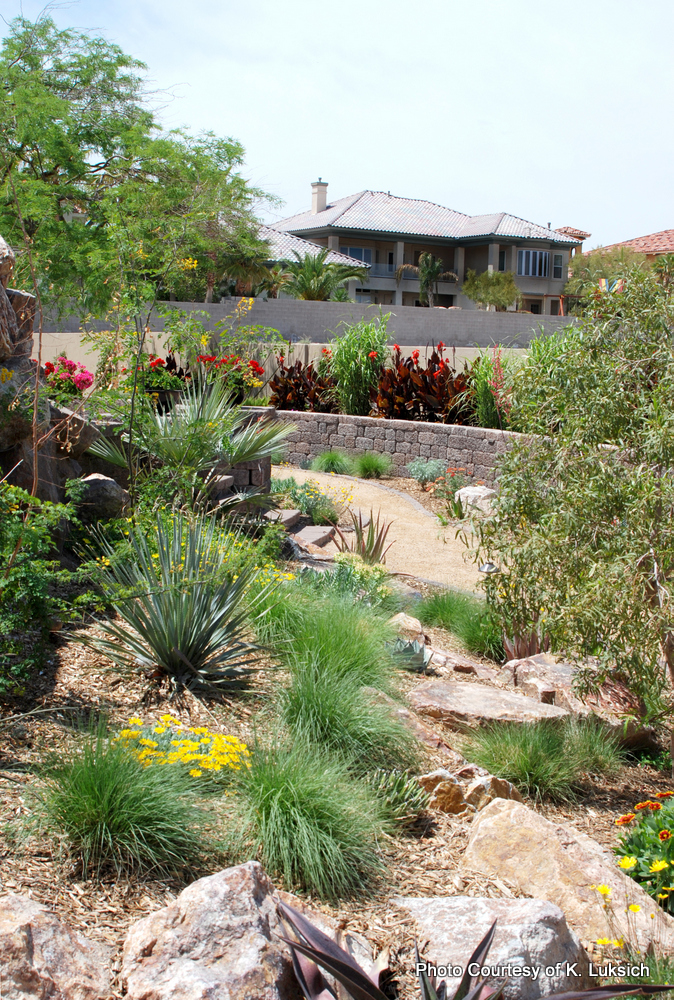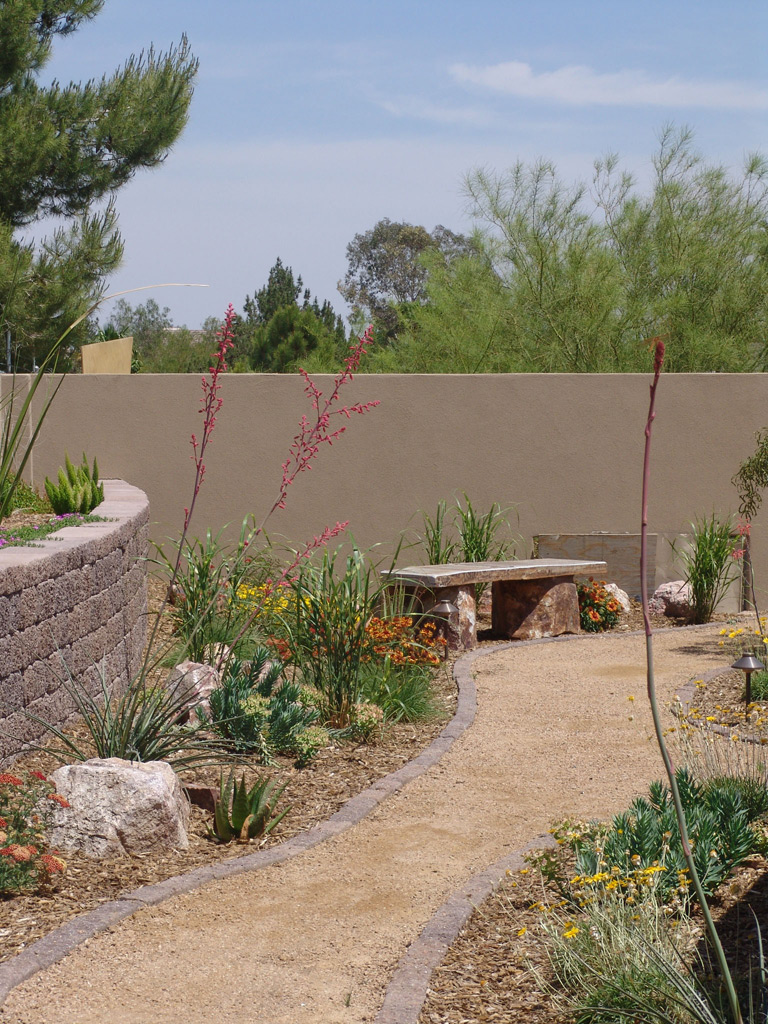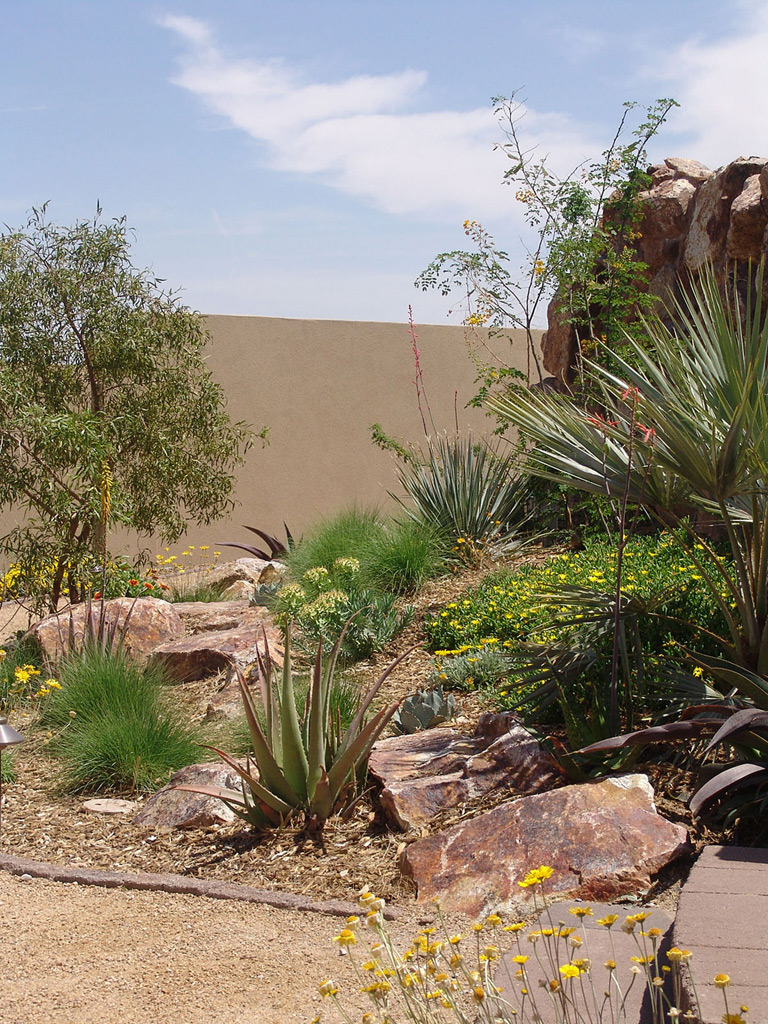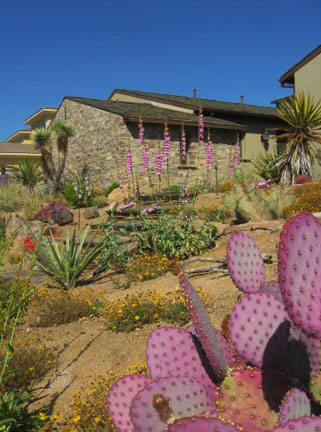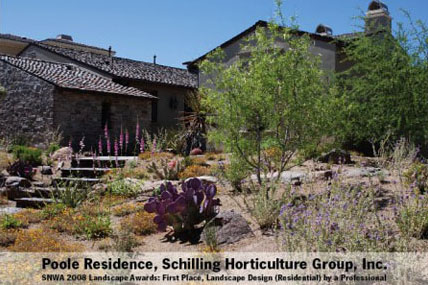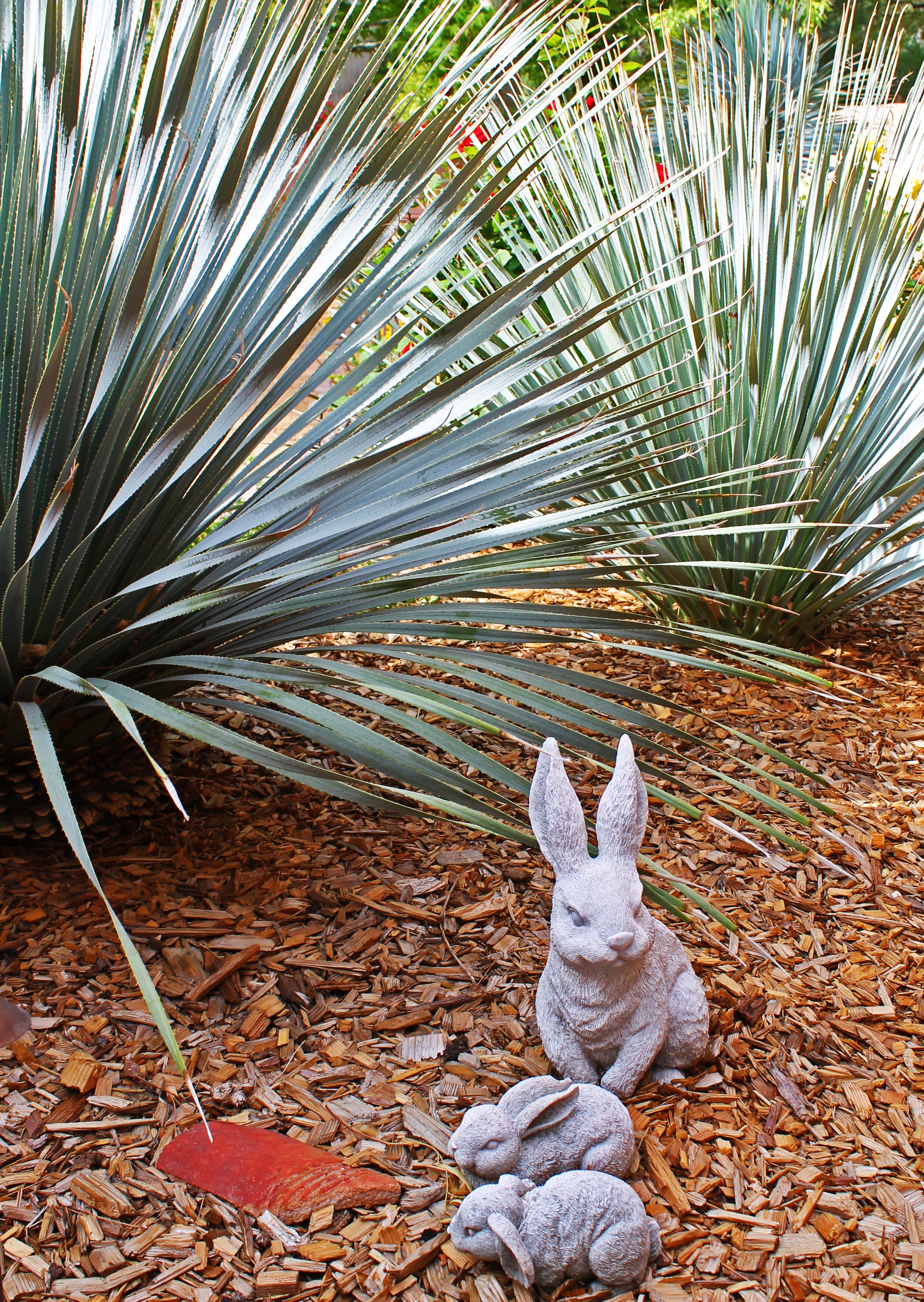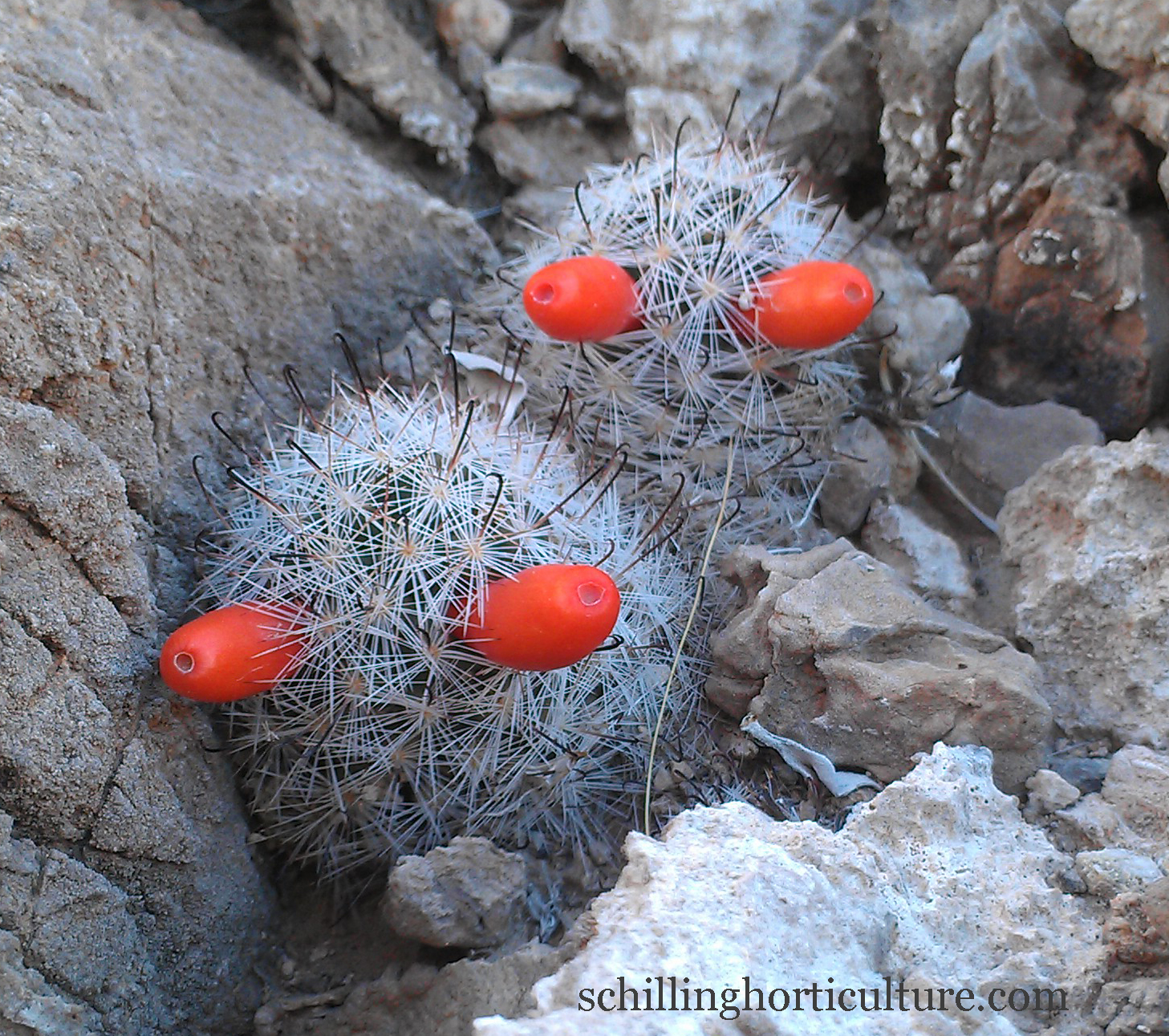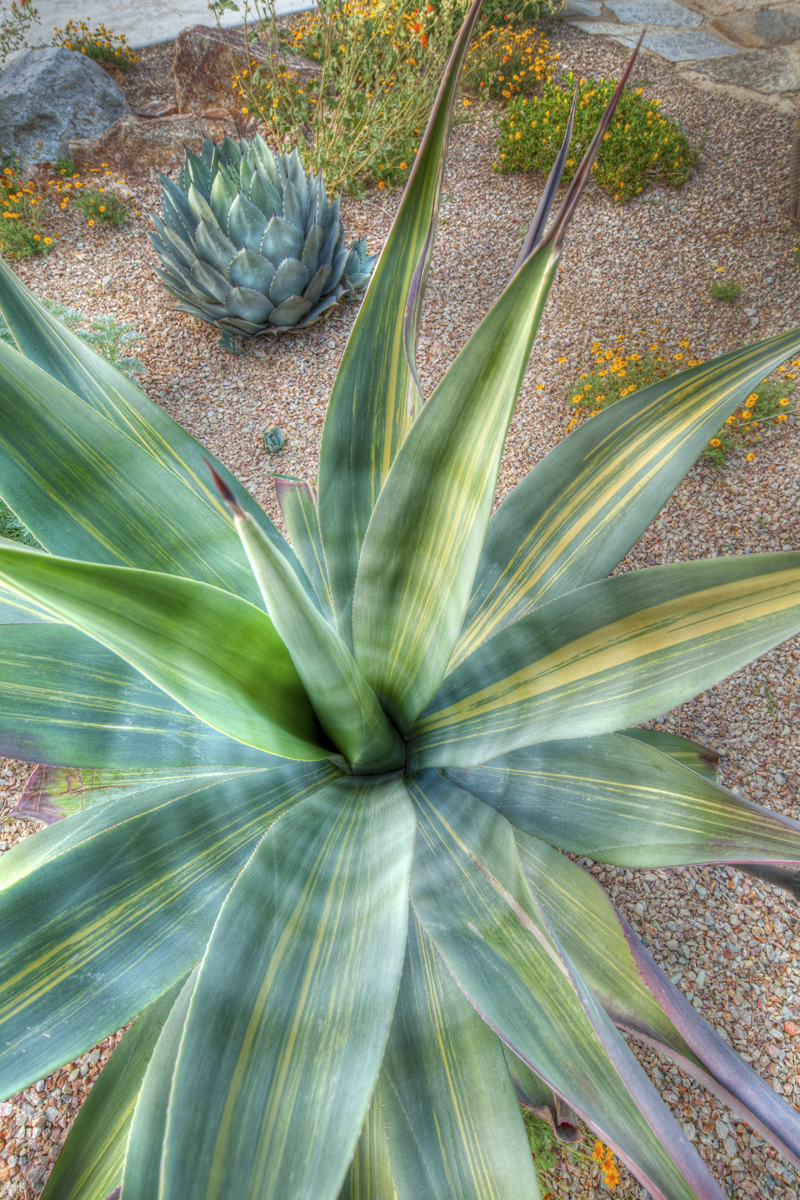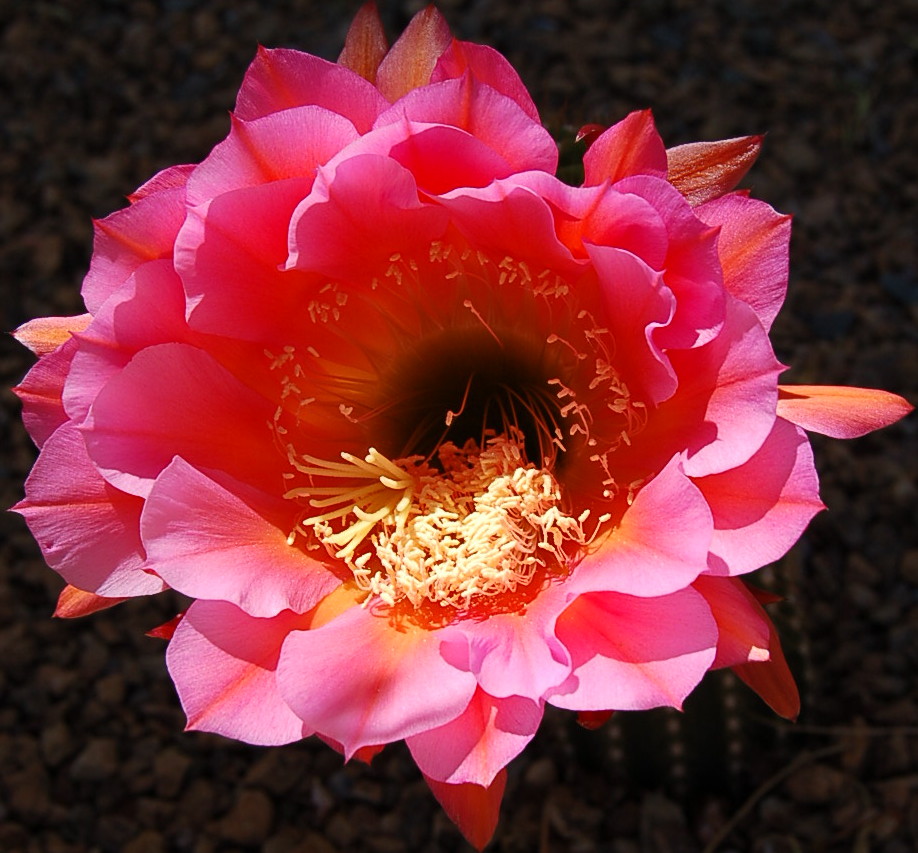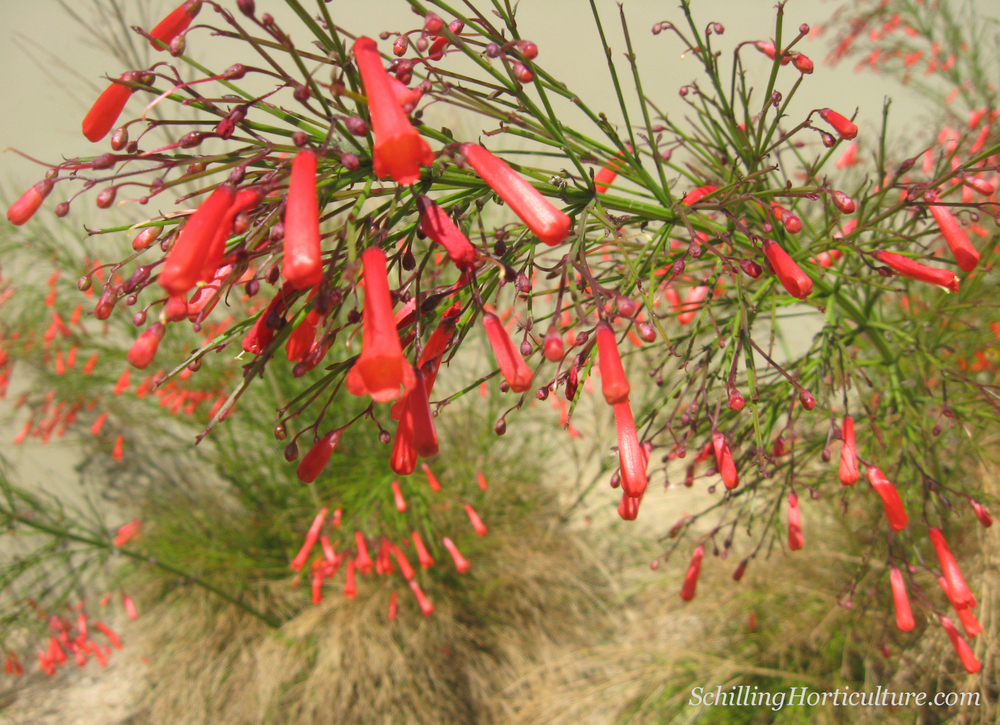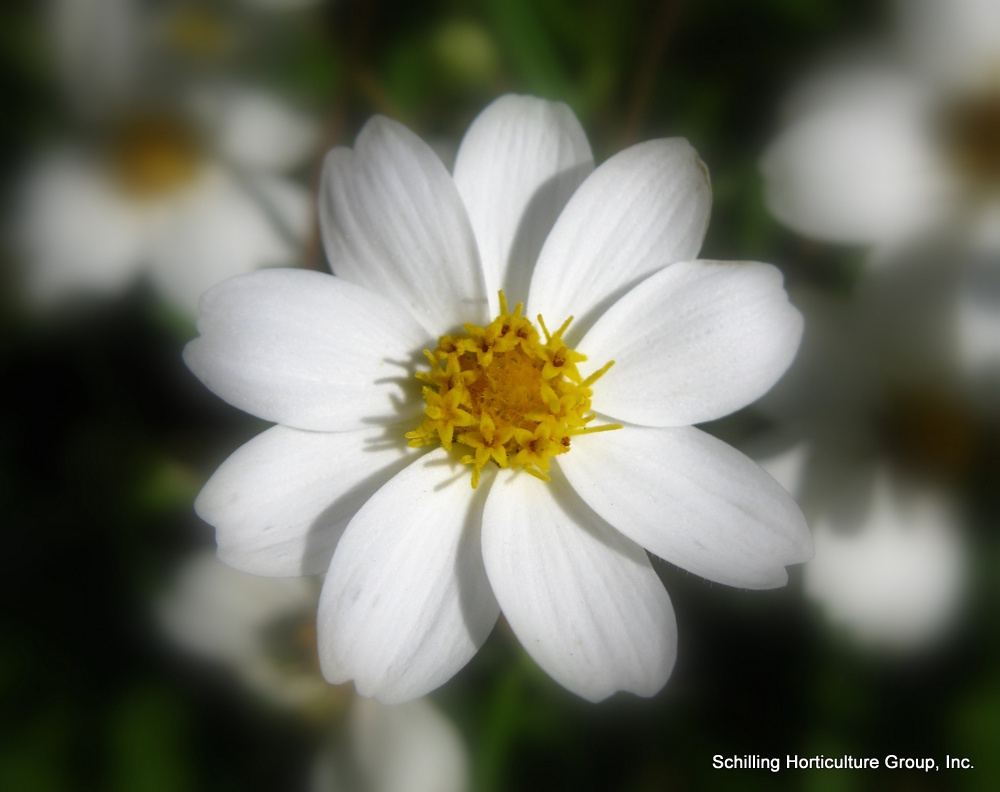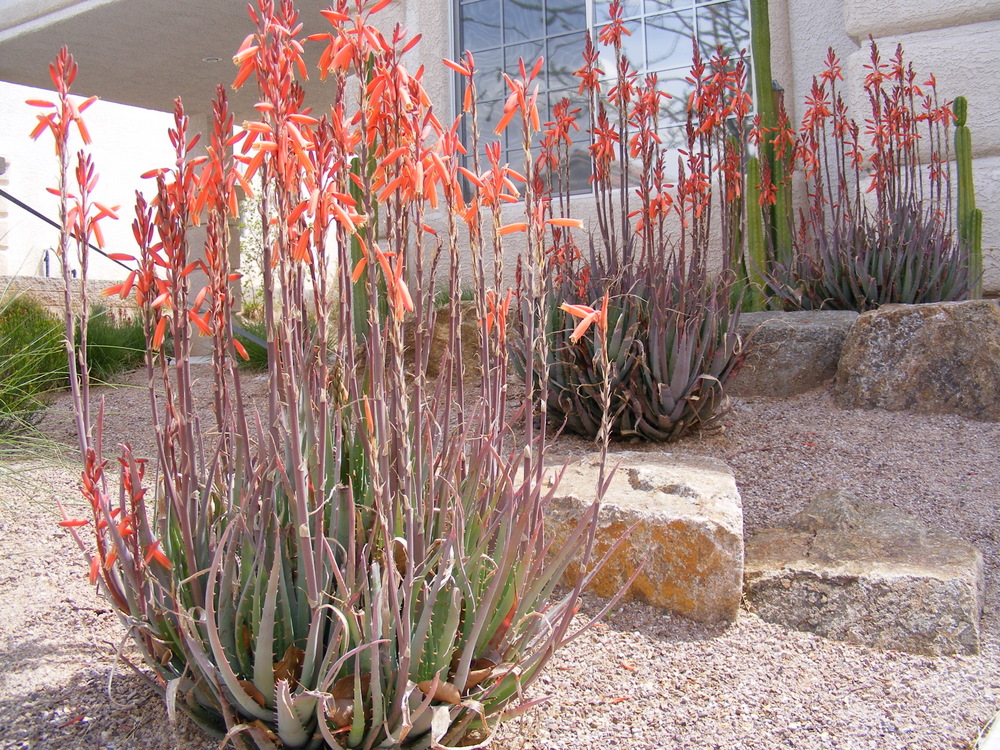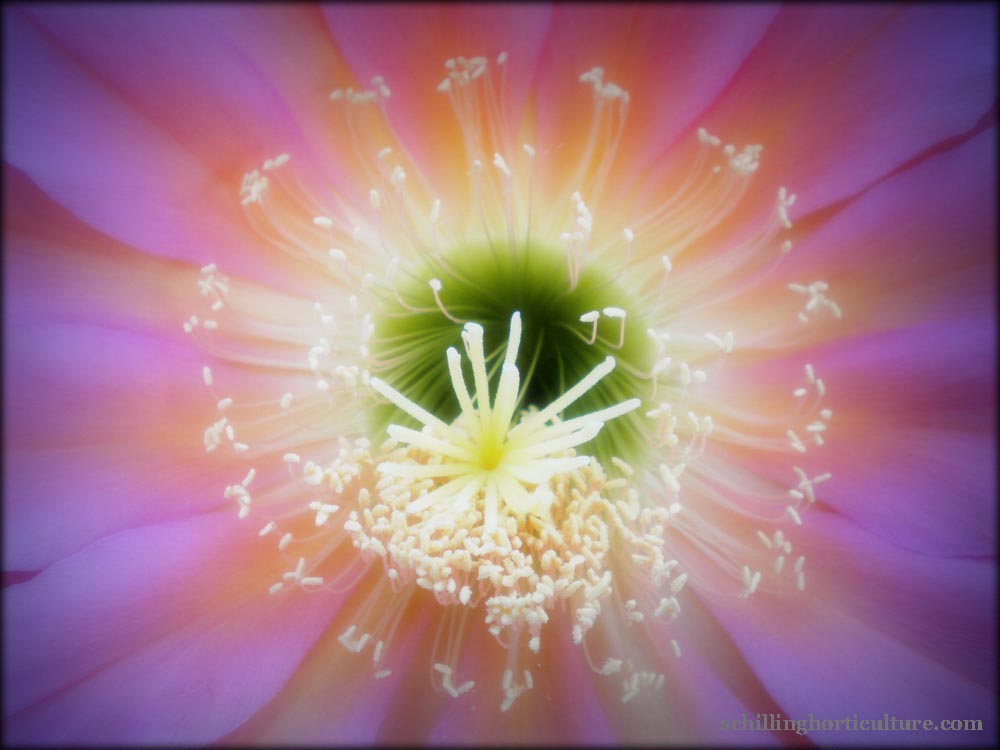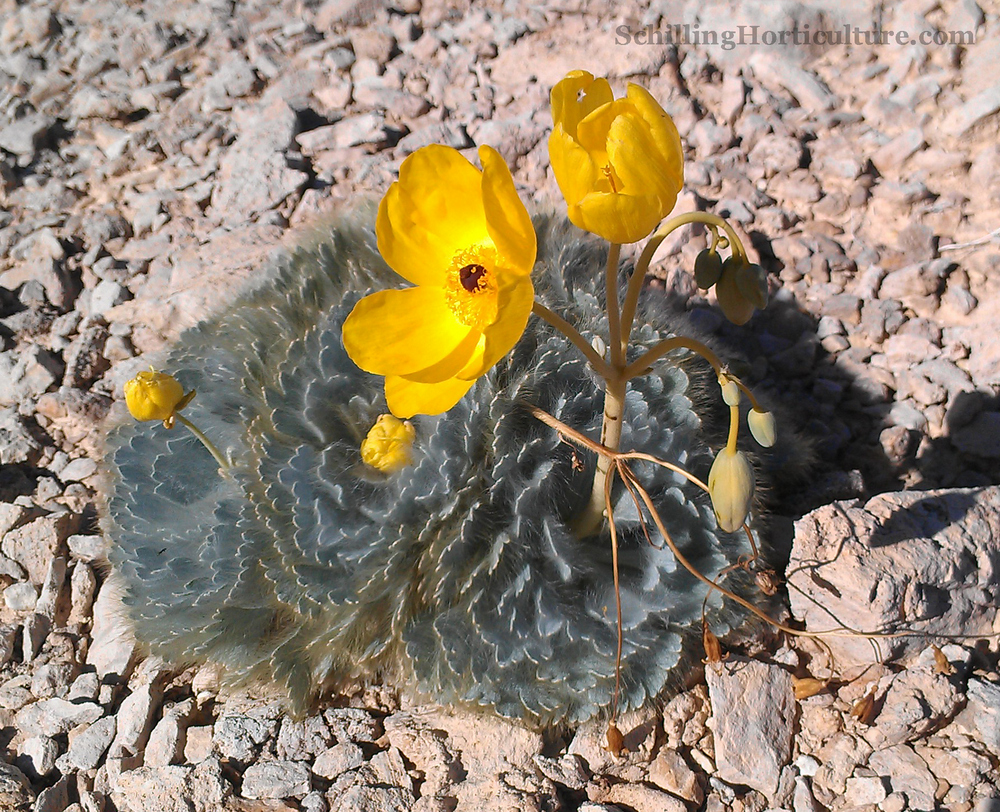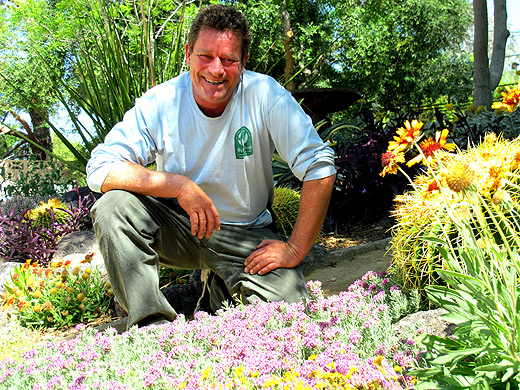The following is a list of what I feel to be some of the very best trees for Southern Nevada. Please note that I said “some”. This list is not meant to be all-inclusive. Just because a certain species is omitted does not mean it is not a good tree. Likewise, while I feel strongly that those trees listed are all wonderful or very promising species, they still require good selection, planting and care, especially in pruning and irrigation.
If you desire more information on tree care, I teach a workshop 4 times a year at the Gardens at the Las Vegas Springs Preserve, formerly known as the Desert Demonstration Garden. In the photos, it is referred to as the “DDG”. The class I teach now goes by the title of “Tree Care for Xeriscape Gardens”, although I do prefer the prior name of “Total Tree Care”. This class and the many others taught there are all free, though some do require reservations. If you would like more info on the classes at this wonderful garden and community resource, visit them on the web or call them at 258-3205.
Another great gardening resource for Southern Nevada is the Cooperative Extension Master Gardener Hotline, at 257-5555. The Master Gardeners are a group of volunteers who have completed a fairly lengthy course on horticulture in our climate, and often come with a wealth of other useful gardening information. Honestly, over the years, I have learned much from these wonderful folk. And if they don’t have the answer to your question when you call, they’ll find the answer for you.
Under the name of each tree, I have included a general note that will read as (Small Size) or (Medium/Large Size), etc. These are generalities, and I have included them for ease of reference.
In the near future, I will be posting information on moderate water use (non-desert) trees for the valley. I will also be providing information on how to select a good tree at a nursery, and how to plant it right. Maybe even some information on watering and staking and how to make a tree more cold hardy…depends on how ambitious I get, for this is a LOT of work.
With all that having been said, read on for what I think are some of the most wonderful trees for our region…and I know I’ll soon be kicking myself for forgetting some particularly beloved species that I completely spaced out when making this list. (grin)
Low Water Users
The Acacias
This is a very large genus of low water use plants. They are very wide spreading in form from tall, narrow trees to short, wide shrubs. Yellow puffball flowers that are often very fragrant characterize the Acacias. All are reputed to be ‘bird-friendly’, and are generally tolerant of our soils. Some species are rather cold tender, so if you choose to include those species in your landscape, limit the numbers in case of loss. High salt levels in the soil can cause chlorosis (yellowing) of the leaves. If this is the case, leaching can mitigate it. Leaching is the application of a large volume of water (usually 4 or 5 times normal run-times), several times per year. This large volume of water carries the salt deep below the roots, and out of the rooted area of the plant. With normally high levels of salts in our soil and water, leaching is a good general landscape practice.
Sweet Acacia (Acacia smallii)
 (medium size)
This naturally multi-trunked tree has a light airy texture to the canopy because of the very small size of the leaflets. The flowers are yellow puffballs, appear in the spring, and are nicely fragrant. The ends of the foliage sometimes have a “weeping” look to them, and that combined with the many small thorns makes this a tree that should be kept well away from walkways. It is a medium sized tree at maturity reaching a height of about 20 to 30 feet, and a width of 15 to 20. This tree is very drought tolerant and likes our native soils. It is evergreen, and cold tolerant to about 10 or 12 degrees. It is quite messy, in a way, for the leaflets are very small, and I think they actually make a very attractive mulch. The birds seem to love this tree for building nests, and often becomes home for our native Verdin, a cute little yellow breasted insect eater and friend to gardeners. This tree is readily available at local nurseries.
(medium size)
This naturally multi-trunked tree has a light airy texture to the canopy because of the very small size of the leaflets. The flowers are yellow puffballs, appear in the spring, and are nicely fragrant. The ends of the foliage sometimes have a “weeping” look to them, and that combined with the many small thorns makes this a tree that should be kept well away from walkways. It is a medium sized tree at maturity reaching a height of about 20 to 30 feet, and a width of 15 to 20. This tree is very drought tolerant and likes our native soils. It is evergreen, and cold tolerant to about 10 or 12 degrees. It is quite messy, in a way, for the leaflets are very small, and I think they actually make a very attractive mulch. The birds seem to love this tree for building nests, and often becomes home for our native Verdin, a cute little yellow breasted insect eater and friend to gardeners. This tree is readily available at local nurseries.
Twisted Acacia (Acacia schaffneri)

 (small/medium size)
This beautiful tree is evergreen, with tiny dark green leaflets set in bunches on almost black wood. Short, tightly dividing branches and twigs makes its form often superbly bizarre. However, its form also seems to vary greatly, and can range from very short and wide, to more upright than wide. Unfortunately, the short, wide ones can be very difficult to work with in most landscapes, however most seem to be rather upright in nature. It can reach about 20 feet wide and tall. The flowers are typically Acacia, small fragrant yellow puffballs in the spring. It is very tolerant of our soils and drought, and is cold hardy to about 20 degrees, so it is a bit cold sensitive. It is also messy. But the form of this tree is so striking and interesting, beautiful, in a bold way, I had to have at least one in my yard. It is also possibly the best bird-nesting tree I think I’ve ever seen. It’s a bit difficult to find at nurseries, though I’ve seen them at the Community College Nursery (651-5050). I love this species.
(small/medium size)
This beautiful tree is evergreen, with tiny dark green leaflets set in bunches on almost black wood. Short, tightly dividing branches and twigs makes its form often superbly bizarre. However, its form also seems to vary greatly, and can range from very short and wide, to more upright than wide. Unfortunately, the short, wide ones can be very difficult to work with in most landscapes, however most seem to be rather upright in nature. It can reach about 20 feet wide and tall. The flowers are typically Acacia, small fragrant yellow puffballs in the spring. It is very tolerant of our soils and drought, and is cold hardy to about 20 degrees, so it is a bit cold sensitive. It is also messy. But the form of this tree is so striking and interesting, beautiful, in a bold way, I had to have at least one in my yard. It is also possibly the best bird-nesting tree I think I’ve ever seen. It’s a bit difficult to find at nurseries, though I’ve seen them at the Community College Nursery (651-5050). I love this species.
Shoestring Acacia (Acacia stenophylla)
 (medium size)
This beautiful tree is quite variable in form, but is usually quite a bit more upright than wide, and has a somewhat to very weeping form. It’s leaves are not true leaves, but rather “phyllodes”, a condition in which the leaf midrib has evolved to provide photosynthesis, and the leaf tissue itself is not apparent, except occasionally, and usually only on seedlings and suckers. Regardless, these ‘leaves’ are very long and thin, around 12″ by 1/4″, hence the common name. The tree reaches an ultimate size of around 30 feet tall and 20 wide. It is quite messy and should not be used near a pool. It has a very ‘exotic’ form, with soft, weeping curves, and interesting twists and turns of wood. Because of this, the tree looks wonderful in silhouette, creates great shadow patterns on walls, and landscape lighting light from beneath can look stunning. Their beautiful form grows in effect as the tree matures, and when young they can look quite gangly. The form is quite open and creates a nice filtered shade beneath. It is cold hardy to a temperature of 20 degrees, so it’s a bit of a risk. It is fast growing, and the wood seems a bit weak, sometimes causing branch failure.
(medium size)
This beautiful tree is quite variable in form, but is usually quite a bit more upright than wide, and has a somewhat to very weeping form. It’s leaves are not true leaves, but rather “phyllodes”, a condition in which the leaf midrib has evolved to provide photosynthesis, and the leaf tissue itself is not apparent, except occasionally, and usually only on seedlings and suckers. Regardless, these ‘leaves’ are very long and thin, around 12″ by 1/4″, hence the common name. The tree reaches an ultimate size of around 30 feet tall and 20 wide. It is quite messy and should not be used near a pool. It has a very ‘exotic’ form, with soft, weeping curves, and interesting twists and turns of wood. Because of this, the tree looks wonderful in silhouette, creates great shadow patterns on walls, and landscape lighting light from beneath can look stunning. Their beautiful form grows in effect as the tree matures, and when young they can look quite gangly. The form is quite open and creates a nice filtered shade beneath. It is cold hardy to a temperature of 20 degrees, so it’s a bit of a risk. It is fast growing, and the wood seems a bit weak, sometimes causing branch failure.
Weeping Acacia (A. salicina)
 This tree is similar to the Shoestring Acacia, but it’s slightly taller, is somewhat less but still weeping in form, and has shorter, 3 inch narrow “leaves”. The Shoestring Acacia is readily available at nurseries, the Willow Acacia less so.
This tree is similar to the Shoestring Acacia, but it’s slightly taller, is somewhat less but still weeping in form, and has shorter, 3 inch narrow “leaves”. The Shoestring Acacia is readily available at nurseries, the Willow Acacia less so.
Catclaw Acacia (Acacia greggii)
 (small size)
In some ways this is my favorite Acacia, and in some ways, my least favorite. It is a native tree to Southern Nevada, growing in the desert as a large full shrub, rarely more than 10 feet tall. It is VERY drought tolerant, capable of going many months without irrigation once established. Trained from its natural shrub form into more of a traditional tree form, it can reach 15 feet tall and a little wider. Though small, it’s bark is ragged and wild, giving it an ‘old’ look. The spring flowers are incredibly sweet and fragrant, and the form open and airy. It is deciduous, and is one of the last trees to leaf back out in the spring. It is cold hardy to 0 degrees. Birds seem to love to nest in it, and for good reason; it has fantastically wicked thorns. Each thorn, though short, is curved like a cat’s claw, and it is easy to become ensnared in it, requiring delicate extrication. I think this is the most painful tree I have ever worked upon. A rare species at nurseries, but can be grown from seed.
(small size)
In some ways this is my favorite Acacia, and in some ways, my least favorite. It is a native tree to Southern Nevada, growing in the desert as a large full shrub, rarely more than 10 feet tall. It is VERY drought tolerant, capable of going many months without irrigation once established. Trained from its natural shrub form into more of a traditional tree form, it can reach 15 feet tall and a little wider. Though small, it’s bark is ragged and wild, giving it an ‘old’ look. The spring flowers are incredibly sweet and fragrant, and the form open and airy. It is deciduous, and is one of the last trees to leaf back out in the spring. It is cold hardy to 0 degrees. Birds seem to love to nest in it, and for good reason; it has fantastically wicked thorns. Each thorn, though short, is curved like a cat’s claw, and it is easy to become ensnared in it, requiring delicate extrication. I think this is the most painful tree I have ever worked upon. A rare species at nurseries, but can be grown from seed.
Whitethorn Acacia (Acacia constricta)
 (small size)
This small Acacia is an excellent choice for small desert yards. Maturing at about 15 to 18 feet tall and wide, it is a good choice for the small yard. It can be grown as a single or multi-trunk tree. Its late spring/summer bloom is wonderfully fragrant, and is followed by long thin bean-like seedpods. Tiny, feathery leaves cast a light shade, perfect for growing other plants beneath. It is deciduous and cold hardy to 0 degrees. It is difficult to find at most nurseries, but I’ve seen them at the Community College Nursery on West Charleston (651-5050).
(small size)
This small Acacia is an excellent choice for small desert yards. Maturing at about 15 to 18 feet tall and wide, it is a good choice for the small yard. It can be grown as a single or multi-trunk tree. Its late spring/summer bloom is wonderfully fragrant, and is followed by long thin bean-like seedpods. Tiny, feathery leaves cast a light shade, perfect for growing other plants beneath. It is deciduous and cold hardy to 0 degrees. It is difficult to find at most nurseries, but I’ve seen them at the Community College Nursery on West Charleston (651-5050).
African Sumac (Rhus lancea)
 (small/medium size)
This tree is native to the arid lands in South Africa. It is a semi-weeping tree with textural bark and often-beautiful form. The bark starts out a light tan-gray in young wood that, with age cracks, revealing reddish hues. Eventually, old wood becomes dark gray and rugged. It is often sold as a single trunk tree, but I much prefer it as a multi-trunk. The form is open and spreading, and branch tips weep gracefully downward. The leaf is composed of three 4″ narrow, pointed leaflets. When new leaves first emerge, they look distorted and seem stuck to each other … this is normal. The flowers are insignificant. The fruit is small yellow to red ‘berries’, and can be quite annoying over concrete or the like. This species often wants to produce lots of ‘water-sprouts’, tall, vigorously growing, very straight branches from inside the tree’s canopy. These should be pruned out, as well as other structural pruning to enhance and show the trees beautiful structure. However, be careful not to over-prune, by not removing more than 25% total foliage in a year. Over-pruning encourages even more vigorous water-sprout production. This tree can reach mature sizes of 30′ tall and 35′ wide, but rarely exceeds much more than 20′ high. It is very drought tolerant. In times of drought, it merely sheds some leaves, more as the drought progresses. In high-water situations, it produces lots of foliage and wood to support it, and the trees natural beauty becomes obscured. It is especially important to avoid frequent irrigation in heavy, slow-draining soils. If watered (deep, wide soakings) only 10 to 15 times per year, the tree remains open and airy, and much more attractive. African Sumac is hardy to about 15 degrees, but can suffer some damage to foliage and twigs around 20 degrees. It is quite ‘messy’, but I look at the leaf litter that lies beneath mine as beautiful tan mulch. It also tends to produce ‘suckers’ from the root system, especially if roots have been cut or damaged, or if the tree suffers extensive cold damage. If this occurs, push a little soil out of the way to see where the sucker is attached, and cut it off almost flush at that point. Persistence in removing suckers will eventually reduce or eliminate this problem. It is readily available at most nurseries.
(small/medium size)
This tree is native to the arid lands in South Africa. It is a semi-weeping tree with textural bark and often-beautiful form. The bark starts out a light tan-gray in young wood that, with age cracks, revealing reddish hues. Eventually, old wood becomes dark gray and rugged. It is often sold as a single trunk tree, but I much prefer it as a multi-trunk. The form is open and spreading, and branch tips weep gracefully downward. The leaf is composed of three 4″ narrow, pointed leaflets. When new leaves first emerge, they look distorted and seem stuck to each other … this is normal. The flowers are insignificant. The fruit is small yellow to red ‘berries’, and can be quite annoying over concrete or the like. This species often wants to produce lots of ‘water-sprouts’, tall, vigorously growing, very straight branches from inside the tree’s canopy. These should be pruned out, as well as other structural pruning to enhance and show the trees beautiful structure. However, be careful not to over-prune, by not removing more than 25% total foliage in a year. Over-pruning encourages even more vigorous water-sprout production. This tree can reach mature sizes of 30′ tall and 35′ wide, but rarely exceeds much more than 20′ high. It is very drought tolerant. In times of drought, it merely sheds some leaves, more as the drought progresses. In high-water situations, it produces lots of foliage and wood to support it, and the trees natural beauty becomes obscured. It is especially important to avoid frequent irrigation in heavy, slow-draining soils. If watered (deep, wide soakings) only 10 to 15 times per year, the tree remains open and airy, and much more attractive. African Sumac is hardy to about 15 degrees, but can suffer some damage to foliage and twigs around 20 degrees. It is quite ‘messy’, but I look at the leaf litter that lies beneath mine as beautiful tan mulch. It also tends to produce ‘suckers’ from the root system, especially if roots have been cut or damaged, or if the tree suffers extensive cold damage. If this occurs, push a little soil out of the way to see where the sucker is attached, and cut it off almost flush at that point. Persistence in removing suckers will eventually reduce or eliminate this problem. It is readily available at most nurseries.
Chaste Tree, Monk’s Pepper (Vitex agnus-castus)
 (small/medium size)
I like this tree because mostly because of the flowers, which are usually a quite striking blue to lavender, and borne on 3 to 10 inch flower spikes at the ends of branches. The late spring flower show is especially intense, but it can bloom sporadically through October. Grayish to medium green leaves have very light colored undersides and radiate out in five distinct narrow leaflets in a palm shape, and the tree is deciduous. This tree is usually a shrub in its native Mediterranean habitat, but with some additional water and good pruning, can become a stunning tree. Its rough grayish trunk bark is very visually textual. It can be grown as a single trunk tree, but I like it better as a multitrunk, and reaches about 15 to 25 feet high and wide. It can take low to moderate amounts of water, but if over watered, its form becomes very straight and foliage dense, and it loses much of its character. It is tolerant of our soils, and is hardy to 10 degrees. The seed structures are prominent and persistent dead twigs after flowering, and this gives a bit of a ‘messy’ look to the tree. The seeds are reputed to be a mild pepper used by the monks in the middle ages, supposedly to help curb sexual desire, hence the common names. If it weren’t for the striking flower show, I wouldn’t like this tree as much, but the colors are so beautiful, and the spring bloom especially strong. There are also varieties with white flowers (‘Alba’) and pink (‘Rosea’). The lavender flowering varieties are very common at local nurseries, but you’ll have to search more for the pink or white flowering varieties.
(small/medium size)
I like this tree because mostly because of the flowers, which are usually a quite striking blue to lavender, and borne on 3 to 10 inch flower spikes at the ends of branches. The late spring flower show is especially intense, but it can bloom sporadically through October. Grayish to medium green leaves have very light colored undersides and radiate out in five distinct narrow leaflets in a palm shape, and the tree is deciduous. This tree is usually a shrub in its native Mediterranean habitat, but with some additional water and good pruning, can become a stunning tree. Its rough grayish trunk bark is very visually textual. It can be grown as a single trunk tree, but I like it better as a multitrunk, and reaches about 15 to 25 feet high and wide. It can take low to moderate amounts of water, but if over watered, its form becomes very straight and foliage dense, and it loses much of its character. It is tolerant of our soils, and is hardy to 10 degrees. The seed structures are prominent and persistent dead twigs after flowering, and this gives a bit of a ‘messy’ look to the tree. The seeds are reputed to be a mild pepper used by the monks in the middle ages, supposedly to help curb sexual desire, hence the common names. If it weren’t for the striking flower show, I wouldn’t like this tree as much, but the colors are so beautiful, and the spring bloom especially strong. There are also varieties with white flowers (‘Alba’) and pink (‘Rosea’). The lavender flowering varieties are very common at local nurseries, but you’ll have to search more for the pink or white flowering varieties.
Desert Willow (Chilopsis linearis)
 (small/medium size)
This is a quite common species in nurseries and our landscapes, but it is so lovely it deserves mention here. Reaching a maximum size of 15 to 30 feet and 12 to 20 feet wide, this species has an open, airy form and a weeping habit, hence it’s common name…it’s actually not at all related to true Willows. The flowers are magnificent, and come in a range of pastel colors in a ruffled, open-throated flower almost reminiscent of Snap Dragons, and appear spring through fall. The tree is deciduous, losing all its leaves in winter, and honestly is quite messy, especially from the numerous seedpods. But hopefully you can get over a little mess for such a wonderful tree. For me, it is in winter that I think this tree is most lovely, for when they shed their leaves, the wonderful sways, curves and arches of the branches are best displayed. This tree is native to Southern Nevada, and hence is tolerant of our soils, aridity and temperatures. It is thornless, but the spent flower twigs can scratch your eye quite badly, so be very careful, and if you work with it, wear safety glasses. This species is readily available at local nurseries.
(small/medium size)
This is a quite common species in nurseries and our landscapes, but it is so lovely it deserves mention here. Reaching a maximum size of 15 to 30 feet and 12 to 20 feet wide, this species has an open, airy form and a weeping habit, hence it’s common name…it’s actually not at all related to true Willows. The flowers are magnificent, and come in a range of pastel colors in a ruffled, open-throated flower almost reminiscent of Snap Dragons, and appear spring through fall. The tree is deciduous, losing all its leaves in winter, and honestly is quite messy, especially from the numerous seedpods. But hopefully you can get over a little mess for such a wonderful tree. For me, it is in winter that I think this tree is most lovely, for when they shed their leaves, the wonderful sways, curves and arches of the branches are best displayed. This tree is native to Southern Nevada, and hence is tolerant of our soils, aridity and temperatures. It is thornless, but the spent flower twigs can scratch your eye quite badly, so be very careful, and if you work with it, wear safety glasses. This species is readily available at local nurseries.
Forman’s Eucalyptus (Eucalyptus formanii)

 (small size)
This small, evergreen tree is one of the more cold hardy of the Eucalyptus genus, handling temperatures down to about 10 or 15 degrees. There are many different species of Eucalyptus, but most get quite large and are cold sensitive, and for reasons of space and time, this is the only Eucalyptus I’ll mention. It is a low water user, but does require a bit more than the most drought tolerant species. It seems to have an open, spreading form, with branches that hang outward and slightly down, and reaches a mature size of 15 to 18′ tall and 12 to 15′ wide. It has great trunk bark, very shaggy and wild looking. The overall color of the foliage is a soft gray-green. This is a very good species, especially because of its size, and is underused in our landscapes. It is hard to find at nurseries.
(small size)
This small, evergreen tree is one of the more cold hardy of the Eucalyptus genus, handling temperatures down to about 10 or 15 degrees. There are many different species of Eucalyptus, but most get quite large and are cold sensitive, and for reasons of space and time, this is the only Eucalyptus I’ll mention. It is a low water user, but does require a bit more than the most drought tolerant species. It seems to have an open, spreading form, with branches that hang outward and slightly down, and reaches a mature size of 15 to 18′ tall and 12 to 15′ wide. It has great trunk bark, very shaggy and wild looking. The overall color of the foliage is a soft gray-green. This is a very good species, especially because of its size, and is underused in our landscapes. It is hard to find at nurseries.
Golden Lead Ball Tree (Leucaena retusa)
 (small size)
This wonderful little tree has light airy foliage, and fluffy golden balls for flowers. Because of the shape of the tree, it’s finely divided little leaflets, and its open form, this tree has a real “tropical” look to it, and no thorns either. Reaching a maximum size of 12 to 15 feet (though I’ve never seen one bigger than 10 feet), this tree is an excellent small patio specimen, and works well in small yards. It can be evergreen in very mild winters, but will drop its leaves most years. It’s very tolerant of our native soils, and truly a low water user. It is deciduous, so its not very showy in the winter. Unfortunately, it is difficult to find at nurseries.
(small size)
This wonderful little tree has light airy foliage, and fluffy golden balls for flowers. Because of the shape of the tree, it’s finely divided little leaflets, and its open form, this tree has a real “tropical” look to it, and no thorns either. Reaching a maximum size of 12 to 15 feet (though I’ve never seen one bigger than 10 feet), this tree is an excellent small patio specimen, and works well in small yards. It can be evergreen in very mild winters, but will drop its leaves most years. It’s very tolerant of our native soils, and truly a low water user. It is deciduous, so its not very showy in the winter. Unfortunately, it is difficult to find at nurseries.
The Mesquites (Prosopis spp.)
Be prepared to read a bit, for I have a lot of information here on Mesquites. I have a love/hate relationship with them. I love them because they can be such cool looking trees; hate them because they are hard to “train” well for use in most landscapes. All are very drought tolerant, and do fine in poor soils. All have long, yellow, caterpillar-like flowers that are somewhat fragrant. There are quite a few varieties, basically broken up into North American and South American species. The North American species are more cold hardy, so I prefer them, but the South American varieties are usually the thornless ones, except for one new variety called “Maverick”. The problem I see with most Mesquites is in their growth habits and how we try to adapt them to urban landscapes. They have a tendency to send lots of growth “downward”, long hanging limbs, and as a tree pruner, I spend a lot of time “lifting” them, by cutting off that growth. In fact, if allowed to do so, they would actually place their branches on the ground, which helps to support them upright. This growth habit helps create another problem that I’ll get to in a sec. But back to the weeping branches … too much water exasperates this problem. In fact, Mesquites are “water junkies”, so that when water is available, they suck it up, and continue to do so until the source runs out. The problem is, when over-irrigated, the source of water never runs out. They respond to all this water by taking advantage of it to put on new, ever-elongating growth, and much of this growth shoots out and down, requiring constant pruning. And I believe there’s another negative aspect to all that water, which I alluded to earlier. Mesquites ‘think’ like this; “I have lots of water, but as a desert tree, I know that water is the most limiting factor in my life. I had lots of water today, and yesterday, and last week, and last month…but tomorrow the big drought might start, so I’m going to put on lots of new growth of leaves and branches while I can. And since I’m getting so much water, obviously my root system is fine, and there’s no need to develop it much further.” So, they put on lots of top-growth, do not develop much in roots, and then the high winds come, and the tree topples. This is further exasperated by the landscape industry’s propensity to provide only 3 or 4 emitters to each tree, further discouraging root spread. The other problem with too much water is that the wood itself is likely to be much more brittle, and the crotches between branches is often more narrow, and because of this, large branches are more likely to rip off in high winds, especially as the tree matures.
Ok, now more on the different species:
Screwbean Mesquite (Prosopis pubescens)

 (small/medium size)
This is probably my very favorite Mesquite. It is a native species to Southern Nevada, usually growing in the wild as a large shrub, rarely more than 12′ high and 20′ wide. In the landscape, with supplemental watering and pruning, it can reach a mature size of 20′ tall and 25′ wide. It is relatively slow growing, but like all Mesquites, supplemental water speeds up growth. It is the smallest of all the Mesquites, and because of this, is better suited for smaller yards than the other species. This Mesquite is notable for its very rugged, shaggy bark, giving it an ‘ancient’ appearance, and this lends itself well to ‘oriental’ type gardens. Its leaflets are small and gray-green, and if not over-watered, its canopy casts a beautiful filtered shade. The grayish hue of the foliage and bark create a soothing color in desert landscapes.
(small/medium size)
This is probably my very favorite Mesquite. It is a native species to Southern Nevada, usually growing in the wild as a large shrub, rarely more than 12′ high and 20′ wide. In the landscape, with supplemental watering and pruning, it can reach a mature size of 20′ tall and 25′ wide. It is relatively slow growing, but like all Mesquites, supplemental water speeds up growth. It is the smallest of all the Mesquites, and because of this, is better suited for smaller yards than the other species. This Mesquite is notable for its very rugged, shaggy bark, giving it an ‘ancient’ appearance, and this lends itself well to ‘oriental’ type gardens. Its leaflets are small and gray-green, and if not over-watered, its canopy casts a beautiful filtered shade. The grayish hue of the foliage and bark create a soothing color in desert landscapes.
 After late spring flowering, the seedpods are tan bunches of twisted seeds that native wildlife, especially ground squirrels, love to eat. It is a deciduous tree, but the leaflets are so small, they tend to disappear as mulch in the landscape. When the seedpods fall, they lay about in the landscape as though little tan ornaments. It seems much more easy to train into upright form than all the other Mesquites, and can take on unusual and visually very interesting forms. It has been very difficult to find in nurseries, but the Community College Nursery (651-5050) seems to be carrying this species on a regular basis. Also, trees can be started from seed, and can reach good size in surprisingly short time. Screwbean Mesquite is one of my very favorite species of trees.
After late spring flowering, the seedpods are tan bunches of twisted seeds that native wildlife, especially ground squirrels, love to eat. It is a deciduous tree, but the leaflets are so small, they tend to disappear as mulch in the landscape. When the seedpods fall, they lay about in the landscape as though little tan ornaments. It seems much more easy to train into upright form than all the other Mesquites, and can take on unusual and visually very interesting forms. It has been very difficult to find in nurseries, but the Community College Nursery (651-5050) seems to be carrying this species on a regular basis. Also, trees can be started from seed, and can reach good size in surprisingly short time. Screwbean Mesquite is one of my very favorite species of trees.
Western Honey Mesquite (Prosopis glandulosa ‘Torreyana’)
(medium/large size) This Mesquite gets quite large, reaching 25 to 30 feet tall and 30 to 45 feet wide. It has gray-green foliage and a dark trunk. The darkly colored and rugged-textured trunk and the strong twisting form of the major limbs make for a very bold and beautiful tree. The flowers are lightly fragrant, and lead to typical Mesquite bean-like tan seedpods, which, when they fall, can be very messy. It can be grown as a single or multi-trunk tree. It is cold hardy to a temperature of 0 degrees. This species has thorns, but there’s a variety called “Maverick” that is thornless. This tree can be found at nurseries, or can be started from seed.
Texas Honey Mesquite (Prosopis glandulosa ‘Glandulosa’)
(medium/large size) The Texas Honey Mesquite is a very beautiful tree, but it needs room to grow, for it gets as large as the Western Honey Mesquite. It has very bright green foliage and a distinctively weeping form. The tan bark is rather smooth and develops furrows with age. The branches grow up and out, only to droop nearly straight down at their tips, giving this tree a very exotic landscape quality. The almost brilliant green foliage makes a good backdrop and contrast to darker green and gray plants, and to the earth tones of walkways and soils. The ‘soft’ texture of its weeping form also contrasts well with the angularity of boulders, and breaks up straight lines of houses and walls. It has thorns and is cold hardy to 0 degrees. This tree can be found at nurseries, or can be started from seed.
The Palo Verdes
Palo Verde means green stick in Spanish, and the name derives from the gray-green bark of these trees. There are four species well suited to Southern Nevada. All are low water users. They prefer well-drained soils, so if your drainage is poor, be sure not to plant too deep, and if possible, actually plant the tree in a raised area by using an existing ‘hill’, or creating one. All do fine growing in ‘typical’ desert soils, and create moderate amounts of litter, except the Mexican Palo Verde, which is very messy. All have thorns except the Desert Museum Palo Verde.
Blue Palo Verde (Cercidium floridum)
(medium/large size) This beautiful tree has blue-green bark and foliage, and bears masses of yellow flowers in the spring. The flower show is remarkable, turning the entire canopy into a ball of brilliant yet soft yellow. The leaflets are quite small, and the canopy provides a fairly deep shade, yet lets enough light through to grow most other desert shrubs and perennials beneath. The trunk will go from green to a rough gray with age. The branches often take on rather exotic forms, with interesting curves to strong branches. It reaches a maximum size of about 35 feet wide and 30 tall, and is cold hardy down to about 15 degrees. The tree has a somewhat weeping or down-curving form, and requires some pruning to create a tree that you can walk beneath. It is considered somewhat of a haven for desert birds. It is fairly easy to find at local nurseries.
Foothill Palo Verde (Cercidium microphyllum)
(small/medium size) This is the smallest of the Palo Verdes, and is a great desert tree for smaller spaces. It is a slow grower to a maximum size of 20 feet tall and wide. The leaflets are incredibly small and sparse in number. The pale yellow flower show comes later in the spring than the Blue Palo Verde. The form is somewhat twisted and craggy, and a dense interweaving of twigs that terminate in sharp points make this tree a very formidable barrier, and also provides protection for birds and nests. In fact, this characteristic has been responsible for many ‘cat-like’ scratches on my arms, from trying to prune them well. It is cold hardy to about 15 degrees. It is of moderate availability at nurseries…you might have to search a bit.
Desert Museum Palo Verde (Parkinsonia x ‘Desert Museum)
(medium/large size) This tree is actually rather new, in that it was first introduced by the Arizona Sonora Desert Museum in Tucson in 1987. It is a cross between all of the other three Palo Verdes mentioned here, including the cross between two different genuses, Cercidium and Parkinsonia, a very unusual botanical event. It is the only thornless Palo Verde, and the flowers are larger and last longer than the other species as well. It grows quite quickly, reaching a size of at least 25 feet wide and tall, but I suspect it will eventually reach a mature size of about 35 feet across and 30 tall, so give it plenty of room to grow. This tree has beautiful form, and a canopy of foliage open enough to allow the growing of many other types of plants beneath. It is tolerant of desert soils, low water conditions, and is cold hardy to about 17 degrees. The main concern I have with this tree and its viability in landscapes has to do with the development of the root system. Some individual trees within this species had shown a tendency to develop rootstocks that were weak and failed, causing the tree to topple. According to Dennis Swartzell of Mountain States Wholesale Nursery this problem can be minimized in the following ways: First, be sure to inspect the base of any tree you purchase, focusing on the union of the topstock to the rootstock. These trees are almost always grafted, and when inspecting that union, you want to ascertain that it is well formed, with no signs of splitting or peeling. Additionally, check to see if the rootstock is of similar size (in diameter) to the trunk (topstock). However, good cultural care is also a necessity to help insure long-term success. This tree will grow very vigorously when provided supplemental water, and the more water it gets, the faster it will grow. The negative aspects to this are detailed more extensively in the section on Mesquites. Very fast growth on desert trees is almost always a negative thing. But in the case of this Palo Verde, it further exacerbates the potentially different growth rates (especially in diameter) of the trunk to the rootstock. Finally, fairly heavy (but well-selected) pruning will slow the top growth in relation to the roots, allowing the root system to better keep up in development. It is fairly readily available at nurseries.
Mexican Palo Verde (Parkinsonia aculeata)
(medium/large size) This is not one of my favorite trees, but I want to include it for completeness. Though it does become an attractive tree with a somewhat weeping and open form, and lovely flowers, it also has quite a few drawbacks. It is messy, reputed to have relatively weak wood, has thorns, reseeds quite profusely and seems especially subject to attack by Palo Verde borers when compared to the other species. It reaches approximately 30 feet tall and wide, is tolerant of desert soils and low water, and is cold hardy to about 15 degrees. Its fairly easy to find at nurseries.
Texas Ebony (Pithecellobium flexicaule)
(medium size) This evergreen is striking for its dark glossy green foliage of small leaflets and smooth bark. The small branches take on a very interesting zigzag pattern, and the puffy spikes of yellow flowers borne in late spring are wonderfully fragrant. Seedpods are also interesting, chocolate brown and 2 or 3 inches long and quite wide as well. While this tree is fine with our soils and heat, it is a bit cold sensitive and has thorns. But its dark green foliage is so striking, especially in contrast, that it’s worth the risk despite the thorns and cold sensitivity. It grows to a maximum size of about 20 to 30 feet tall and 20 to 25 feet wide. It is a bit cold sensitive, probably capable of handling a minimum of around 15 degrees. It is quite difficult to find at nurseries.
Texas Mountain Laurel, Texas Mescal Bean (Sophora secundiflora)
(small size) This little tree is often classified as shrub. Its medium sized leaves are bright green, and the plant never loses its foliage. In fact, I think it a very good plant for near pools, for it seems to make very little mess. . Though the purple wisteria-like flower show is short lived, it is beautiful and very fragrant, smelling like grape bubblegum. After flowering, it produces fat, undulated bean pods that start out with silvery fur, and then dry to tan, and they are also very ornamental, looking like weird Christmas ornaments hanging. This plant is reputed to be slow growing, and most I’ve seen have borne that out…BUT…mine at home have stunned me.
I believe the younger the plant when put in the ground, the quicker it establishes and grows, and often out-growing larger specimens planted the same time, same place. Mine were little one-gallons, and in 4 or 5 years are now 5 to 6 foot tall, a stunning growth rate for the species. Perhaps it’s because of the sandy soil where they grow, but I think more likely it further proves to me that, when it comes to big woody plants, younger IS better. The plant reaches about 15 foot tall and 10 wide, and makes a great privacy screen. It loves sun, can take some shade, and is very drought tolerant once established. It does very well in poor soils. There is only one pest I’ve known to hurt it, and that is caterpillars that come every spring/summer. They can defoliate a poor Mescal Bean quite quickly. When you see them, either pull them off and squish or drown them, or use “BT”, a naturally occurring bacteria that you spray on and affects only caterpillars. Texas Mescal Beans are often available at nurseries, but you might have to look to find a young one. I found my one-gallons at the Community College Nursery (651-5050). There is also a close relative called the Arizona Mescal Bean (Sophora arizonica) that is smaller, reaching about 6 to 8 feet tall, and is beautifully silver-foliaged. It is much harder to find though.
Texas Olive (Cordia boissieri)
(small size) This is a lush looking tree with a beautiful flower show. The large, gray-green, simple leaves are atypical for most desert trees, and add a certain lush characteristic. The 2 1/2″ flowers are five-petaled, white with yellow throats, and very showy. The first bloom is in mid-spring, and sporadic thereafter, with a repeat bloom possible in the fall. Small fruit, about 1″ across follows. Flower, fruit and leaves can make a bit of a mess over hardscapes. The tree reaches about 12′ tall and wide, and is quite cold hardy, down to about 15 degrees. It is hard to find at nurseries.




